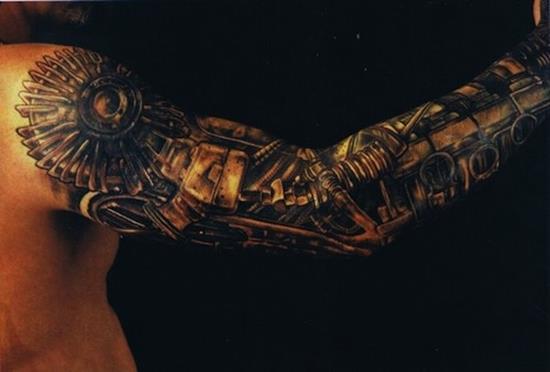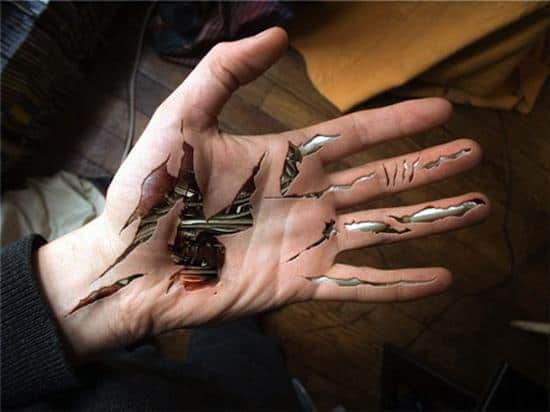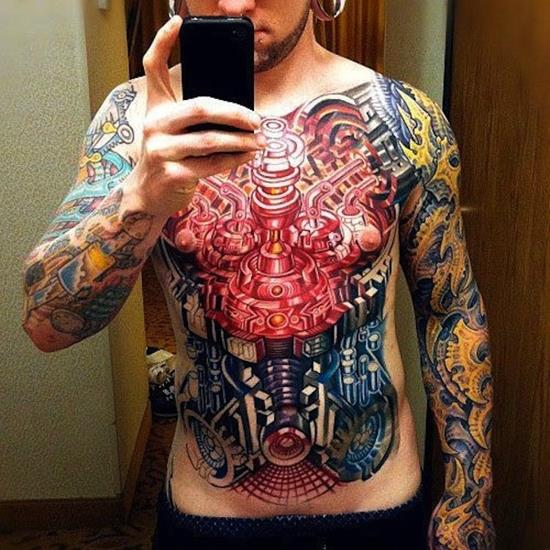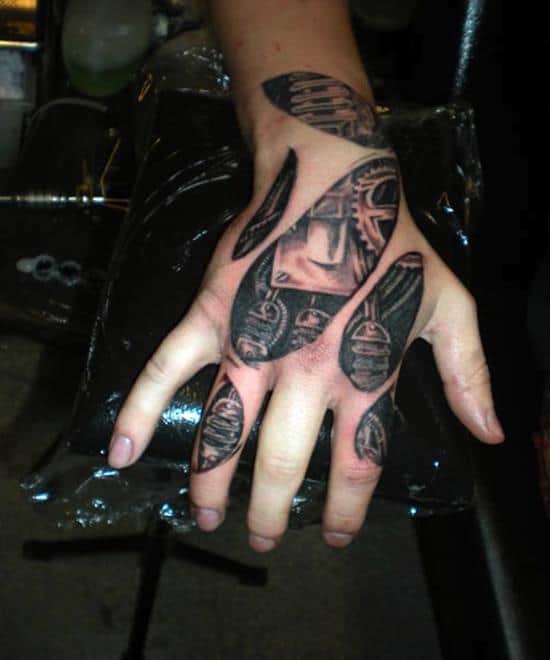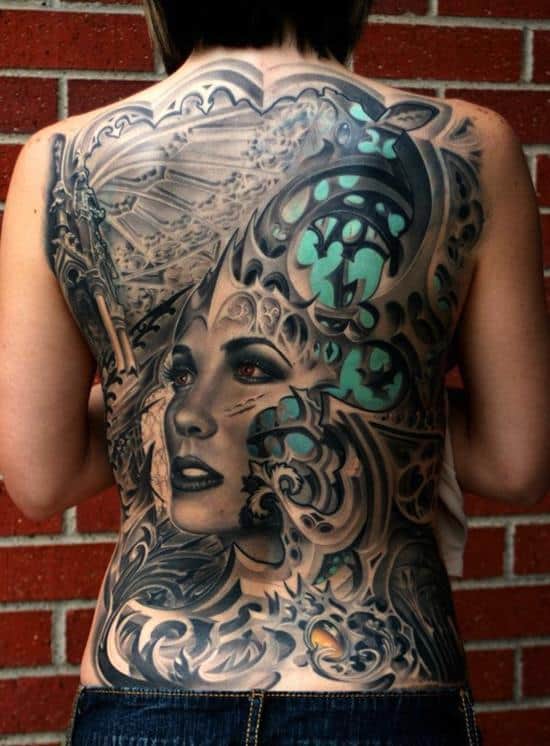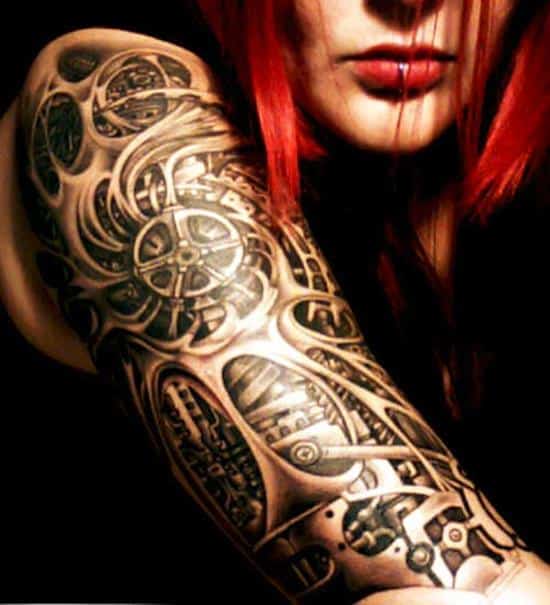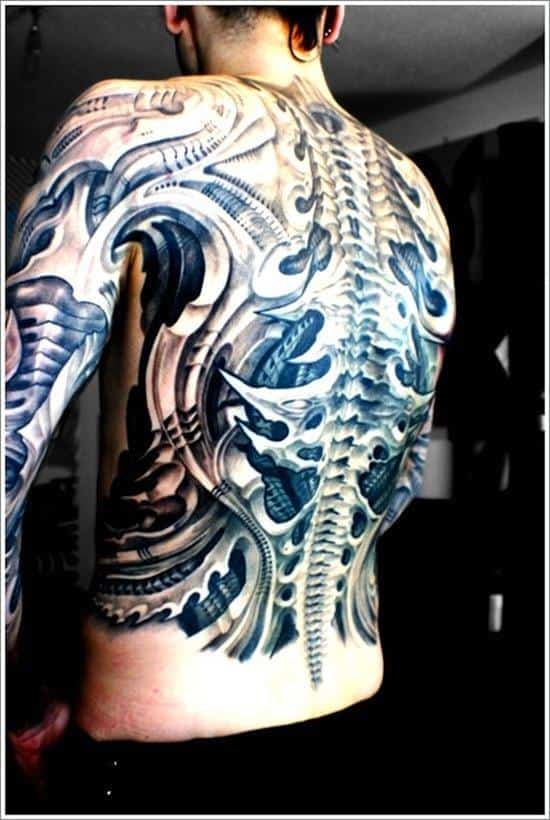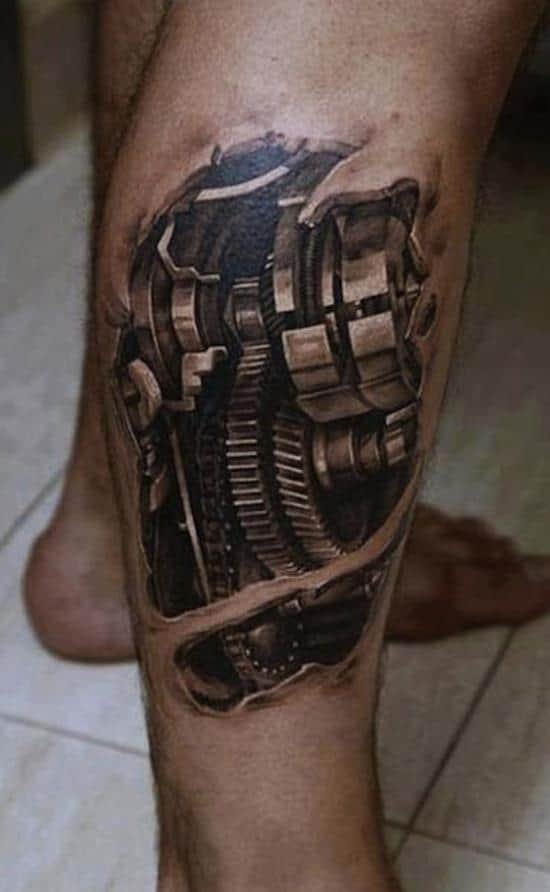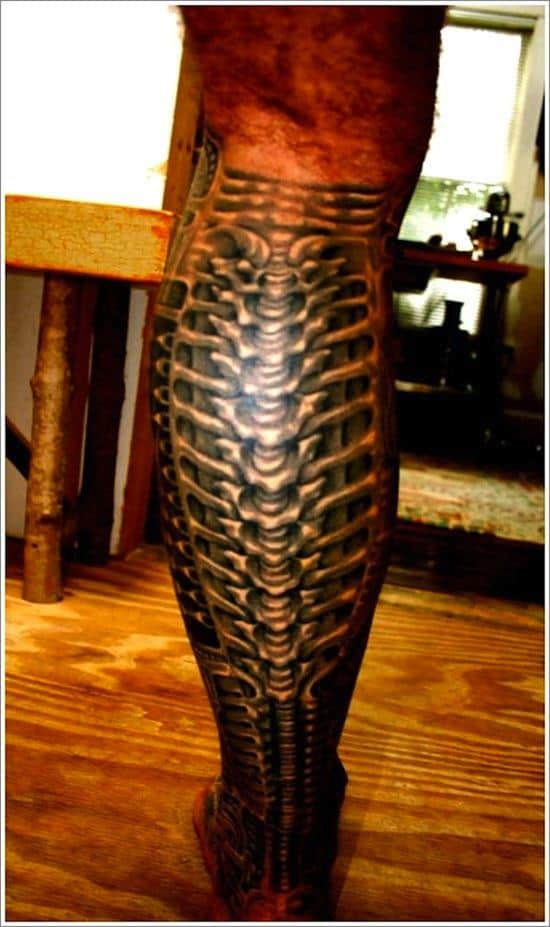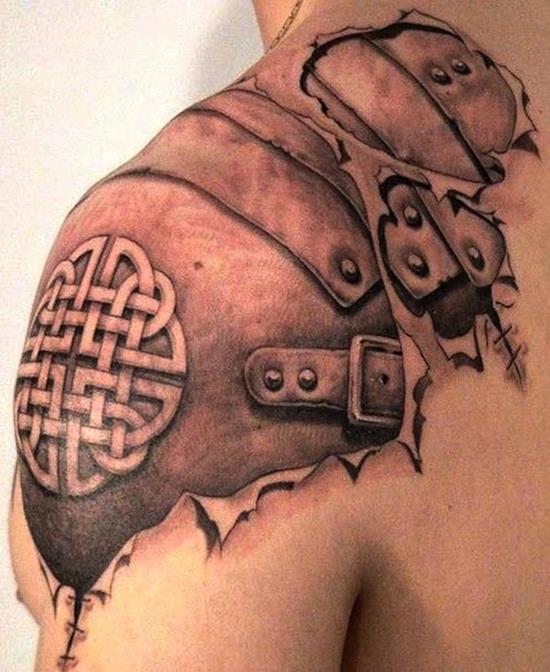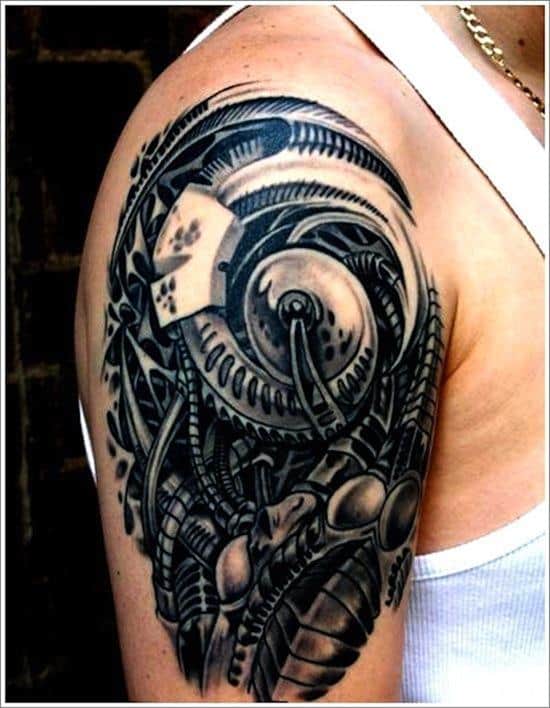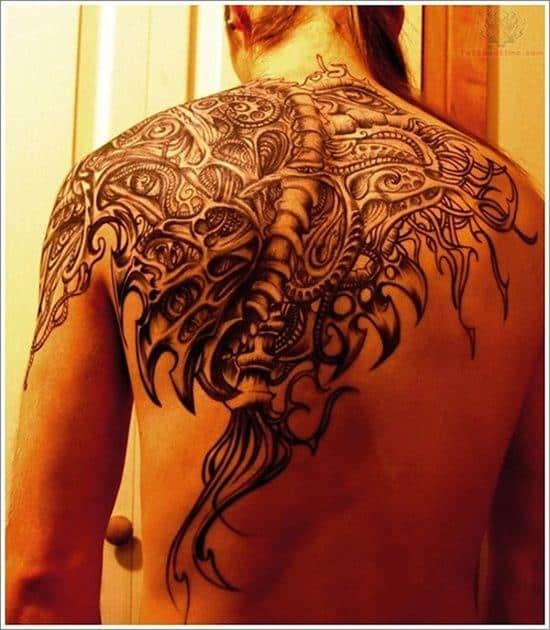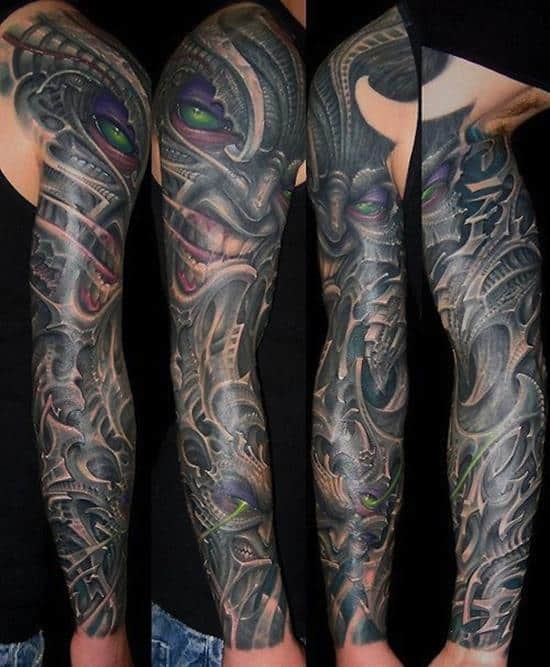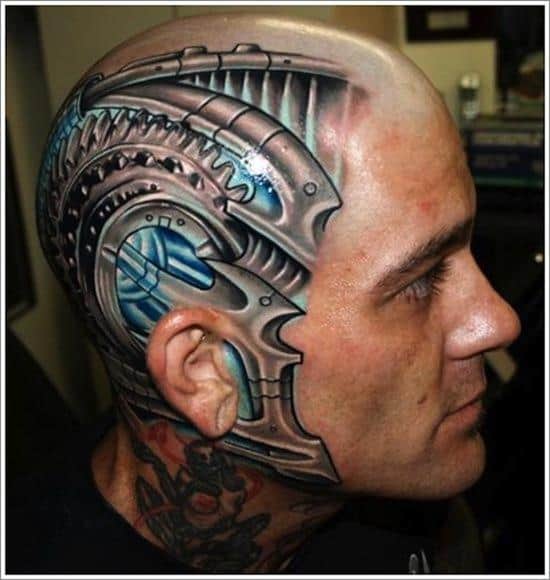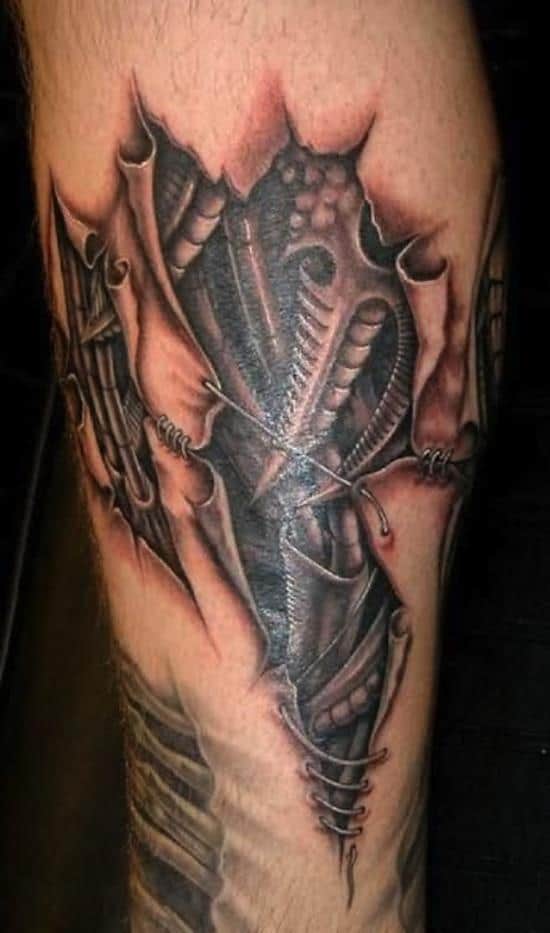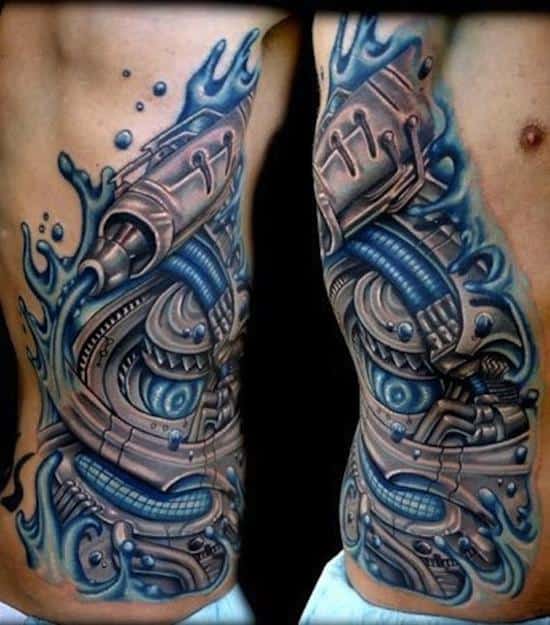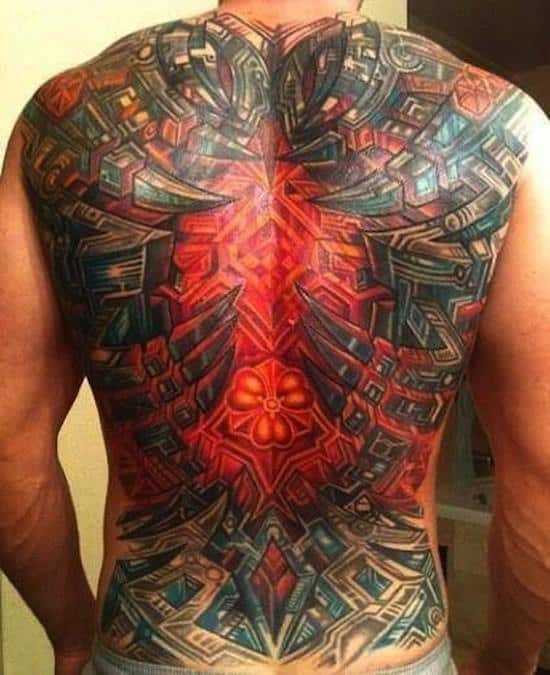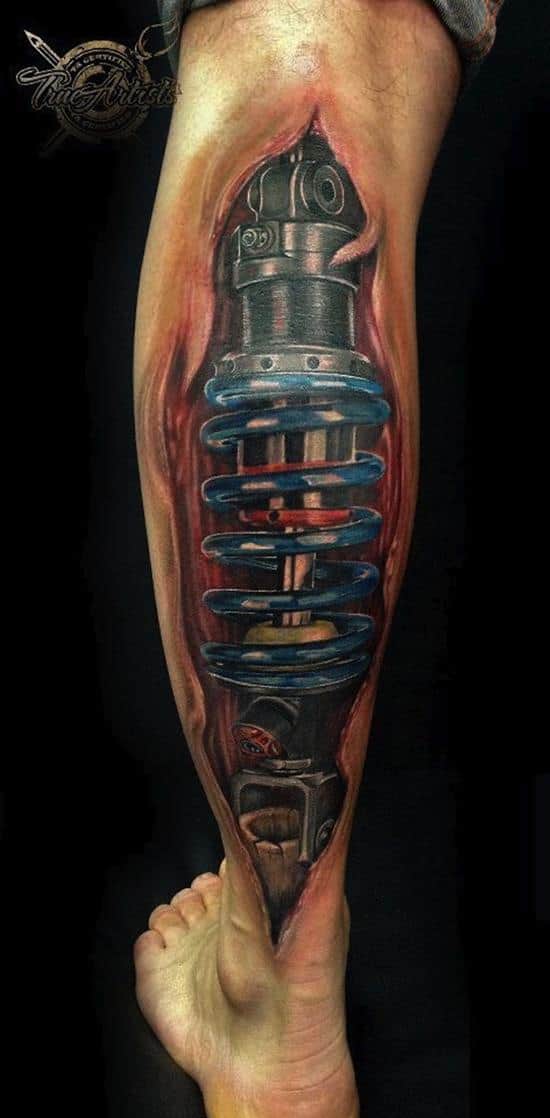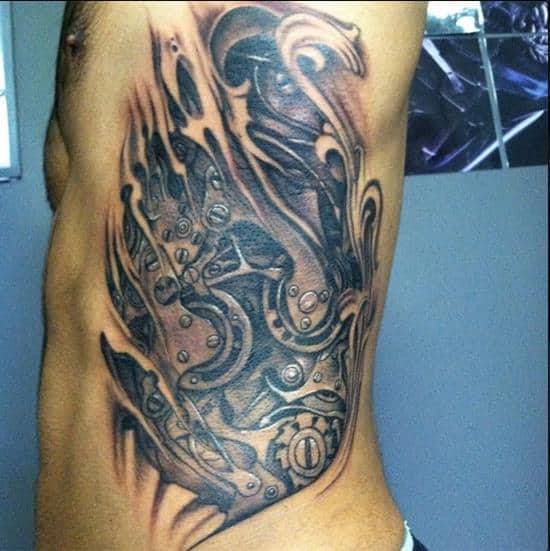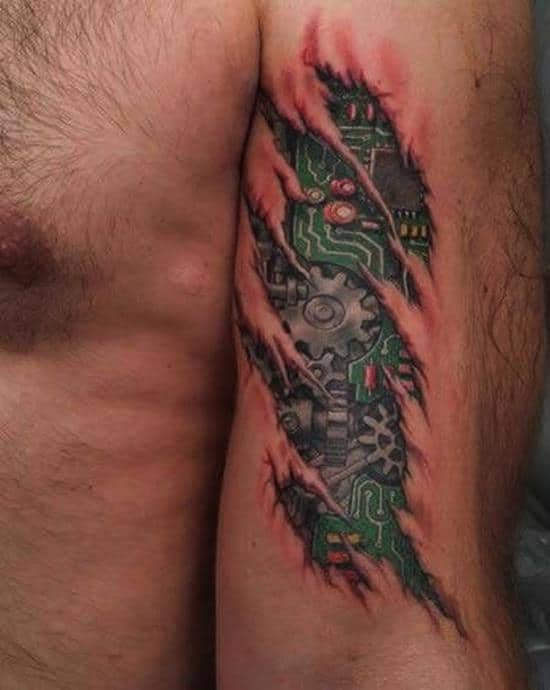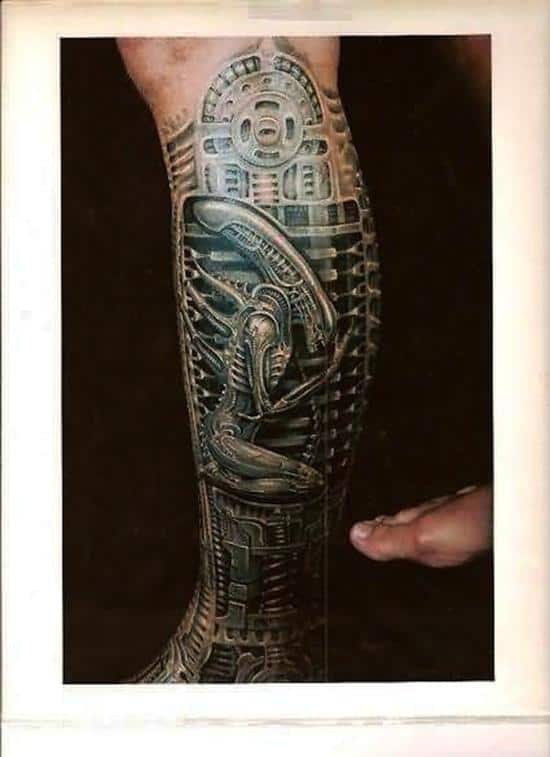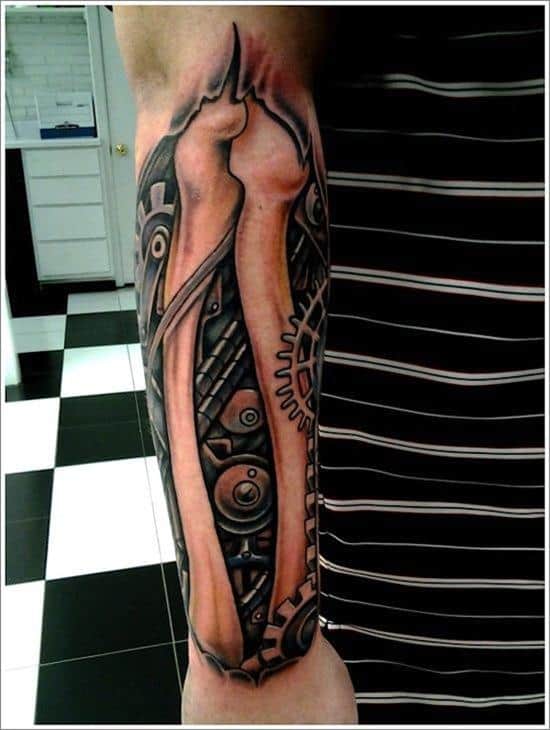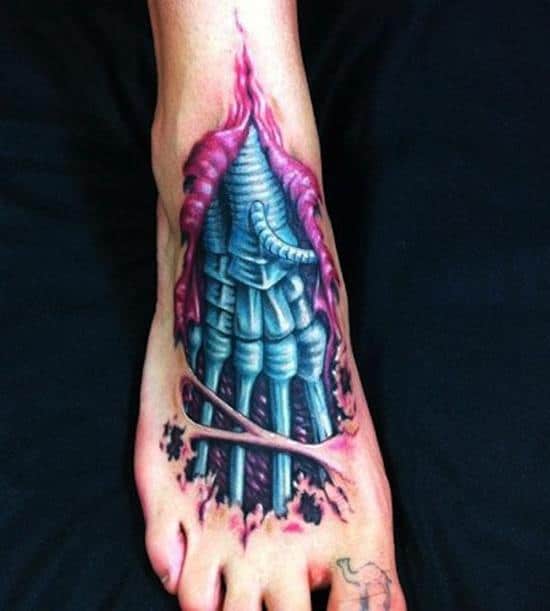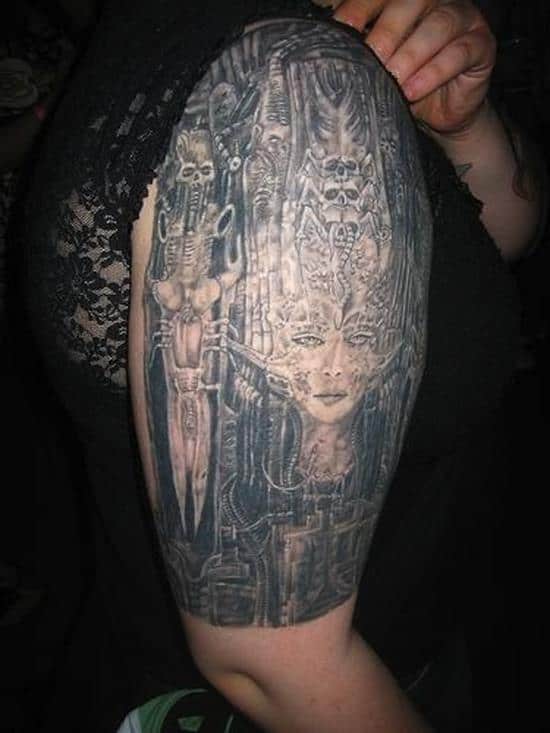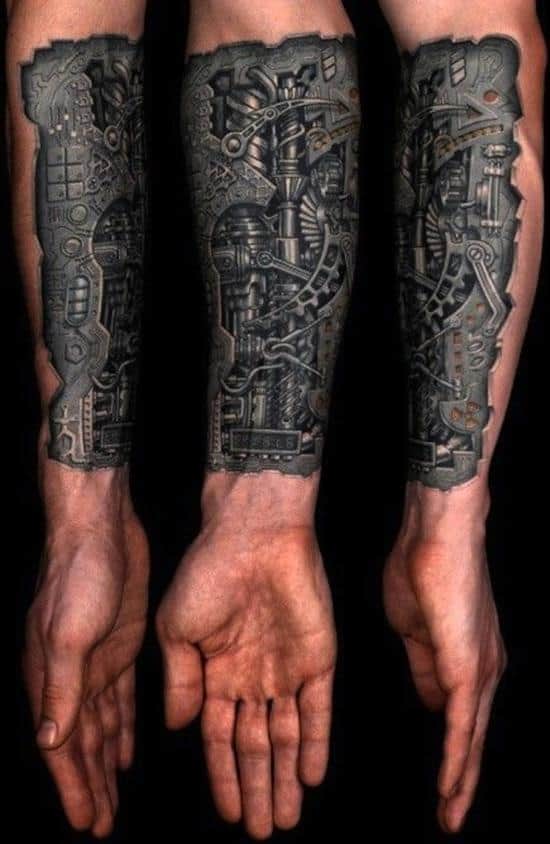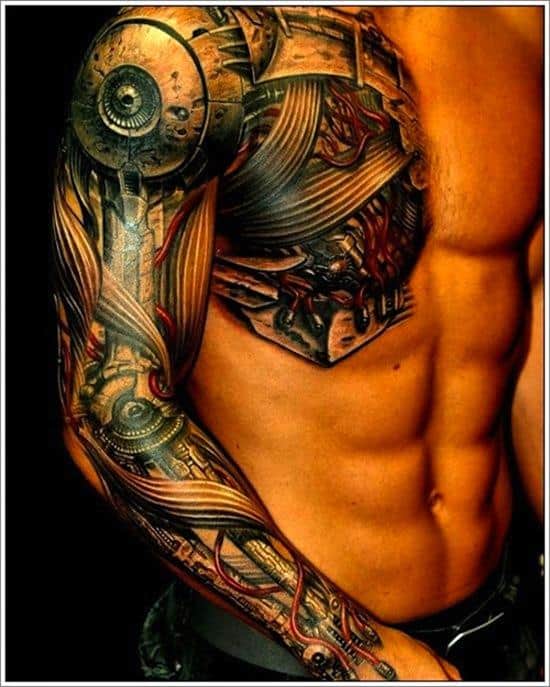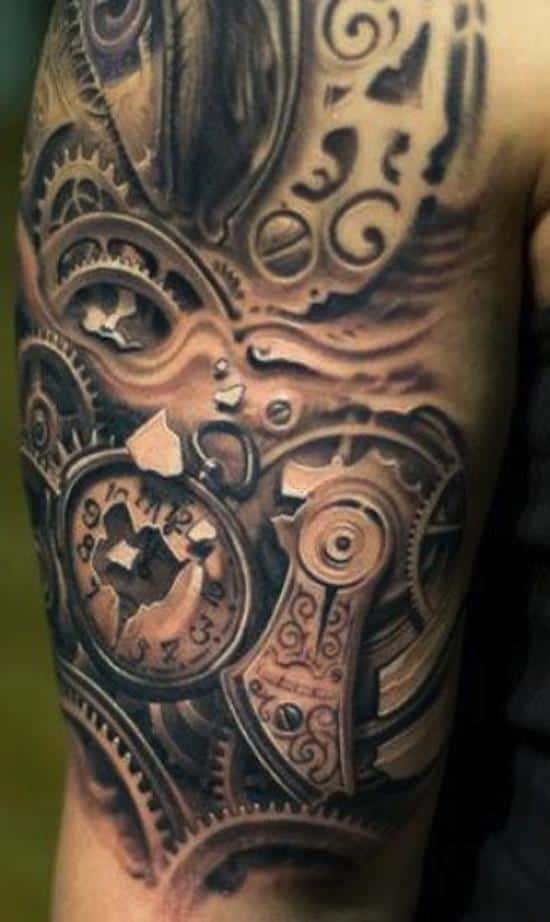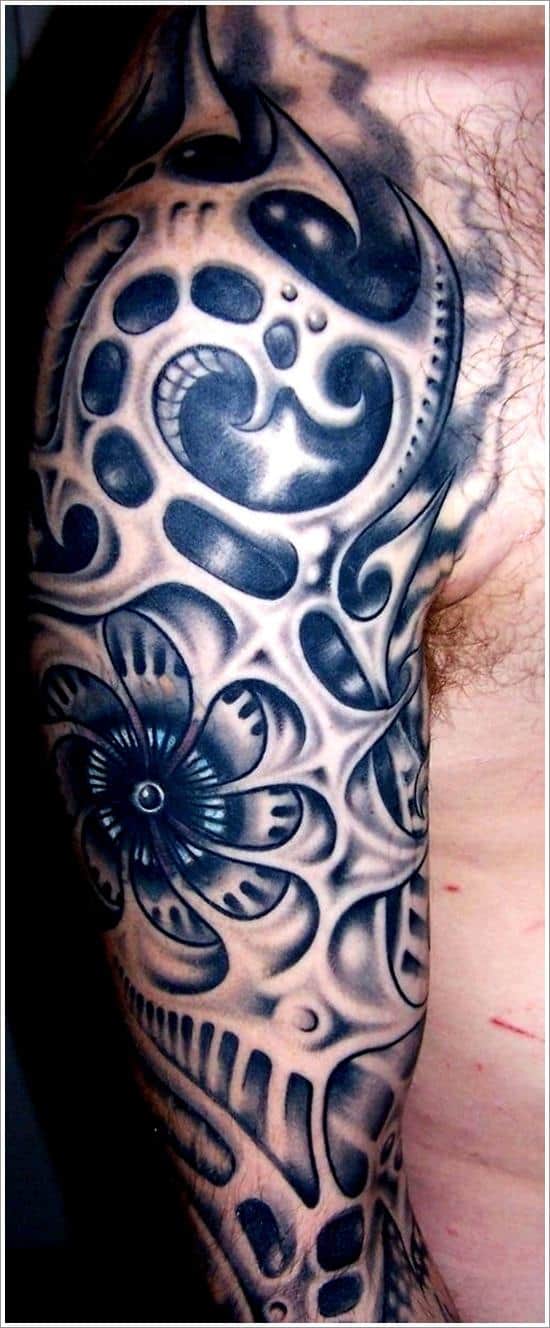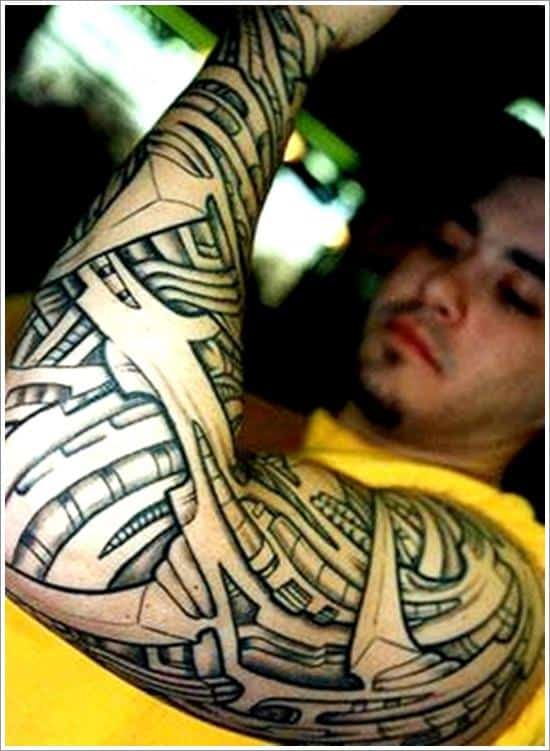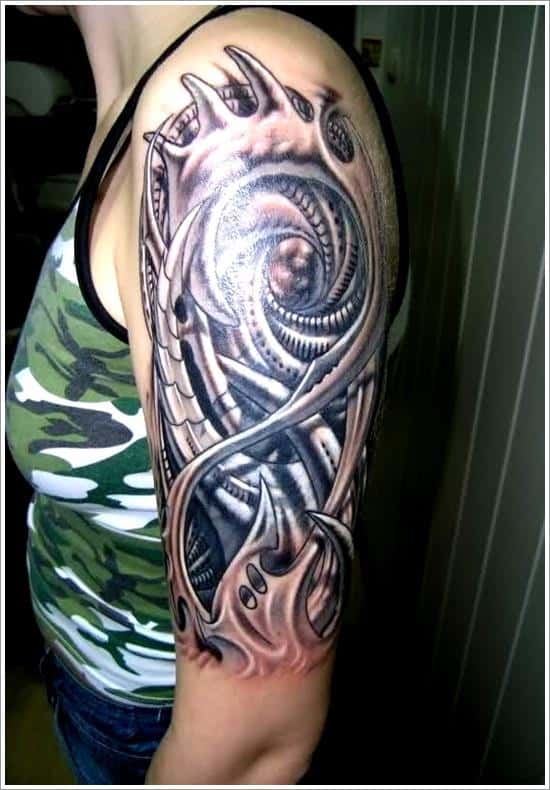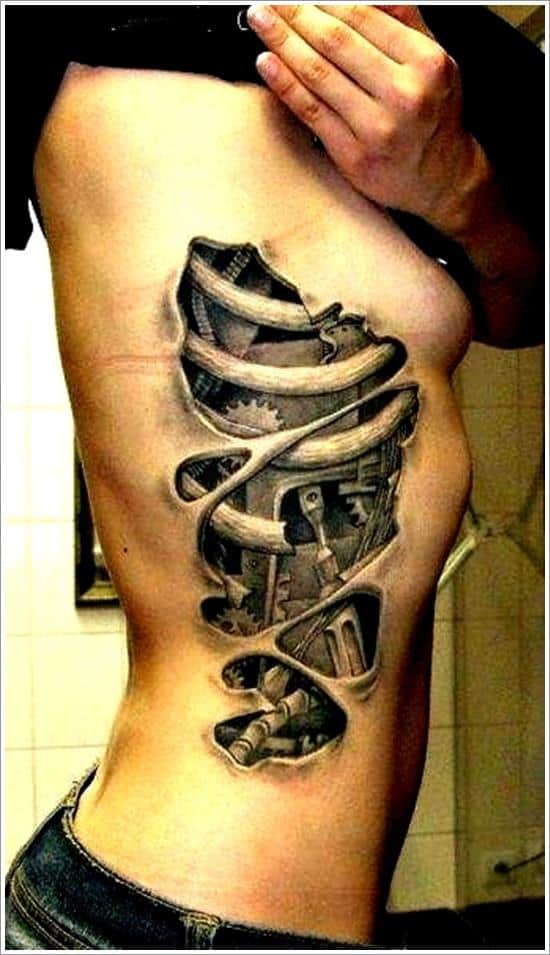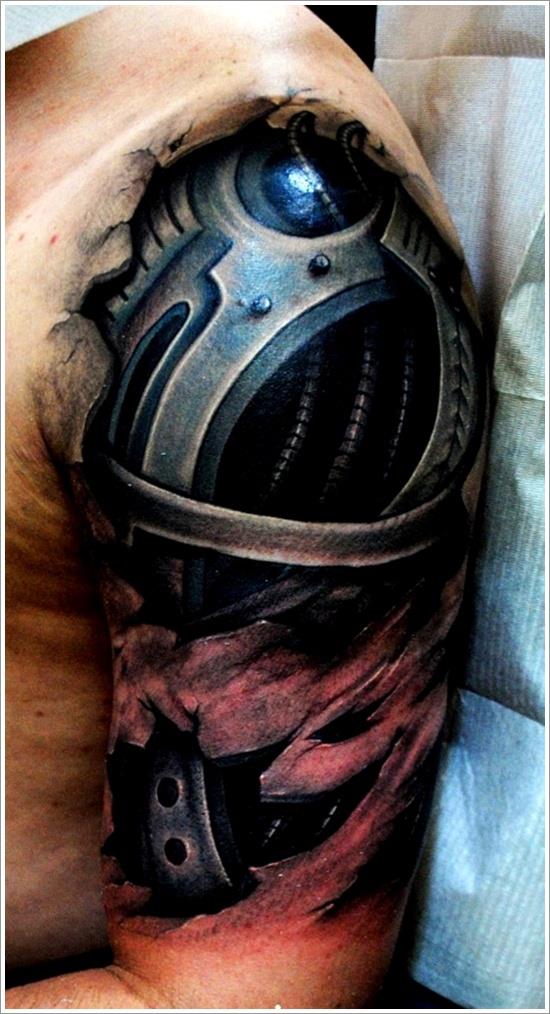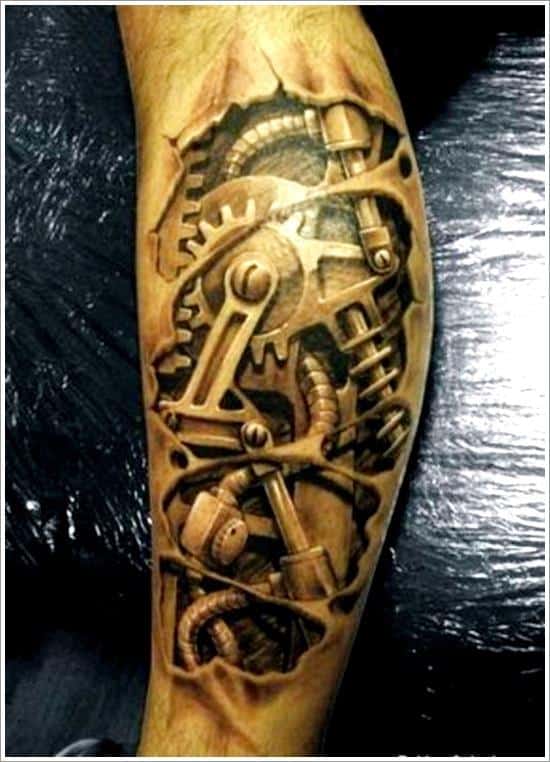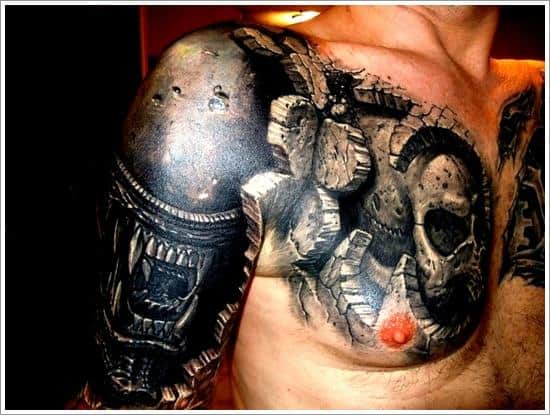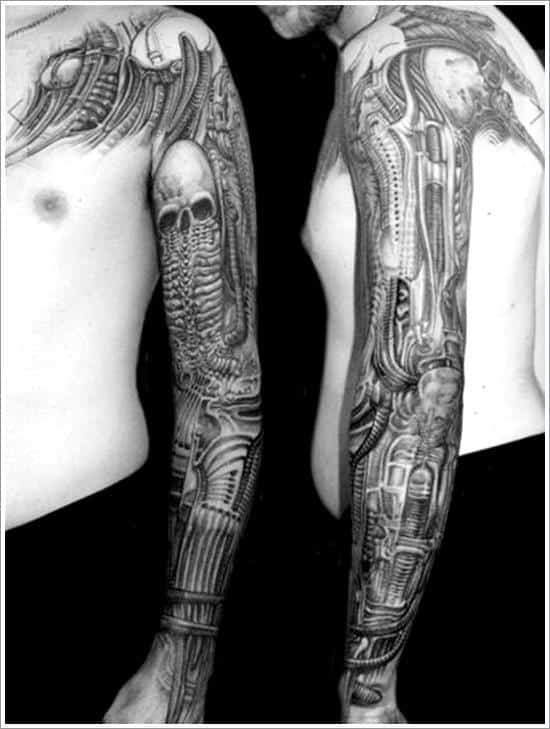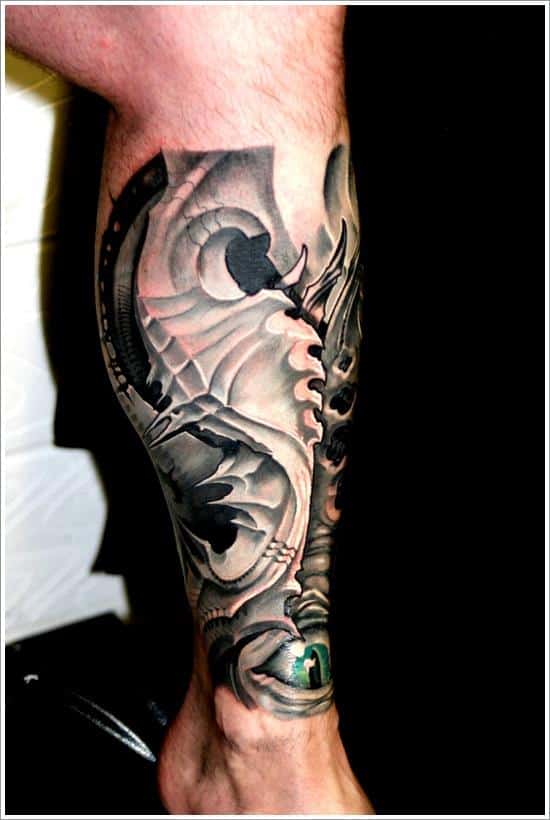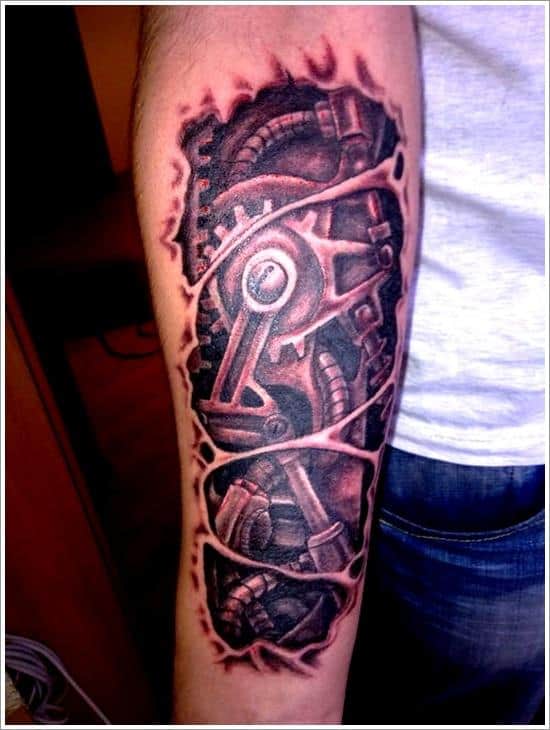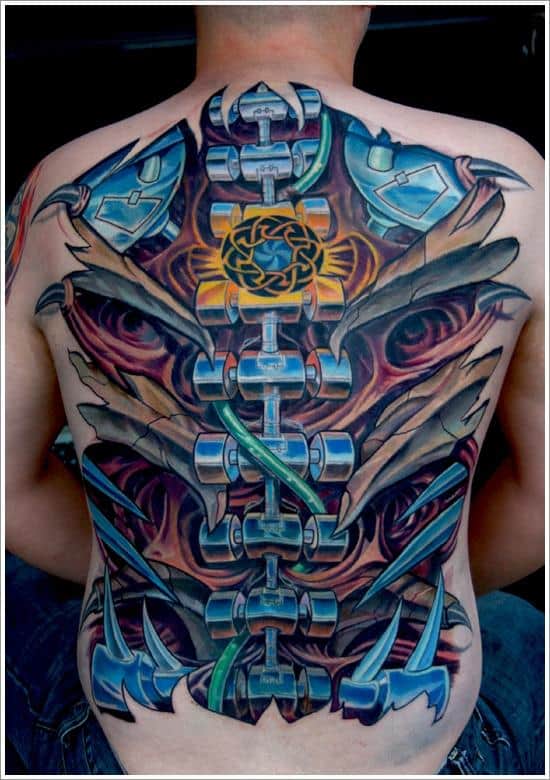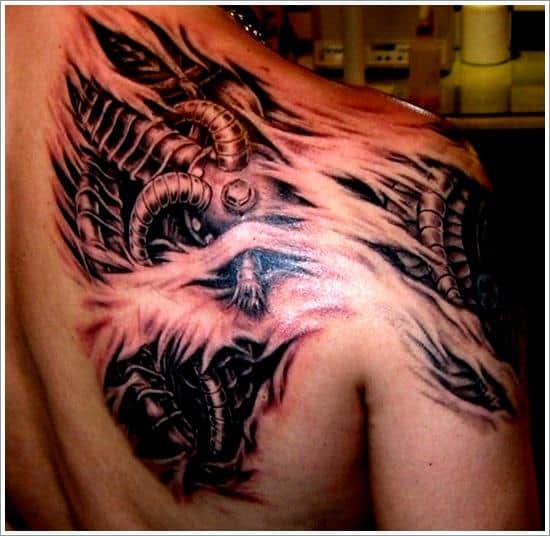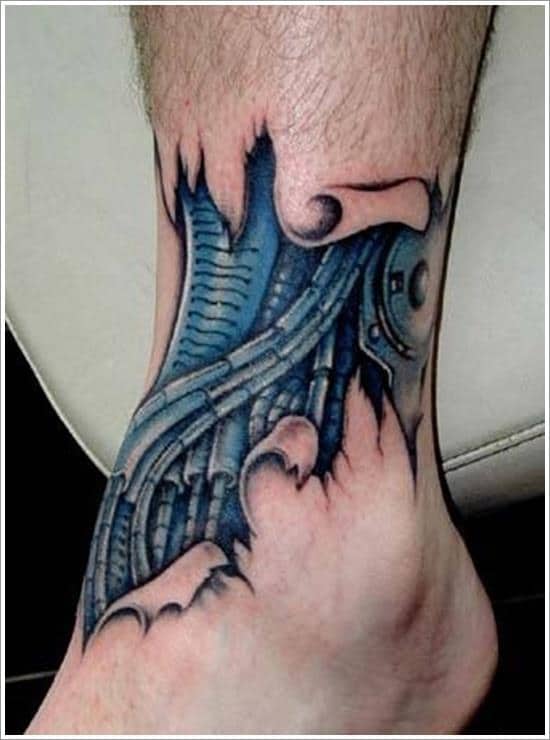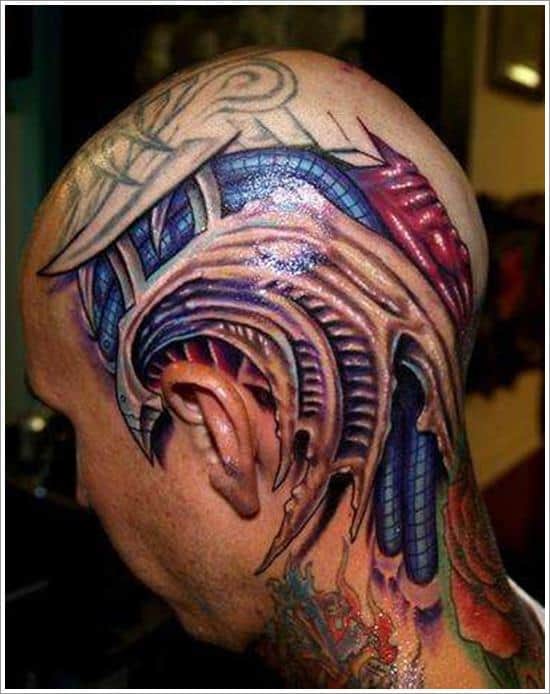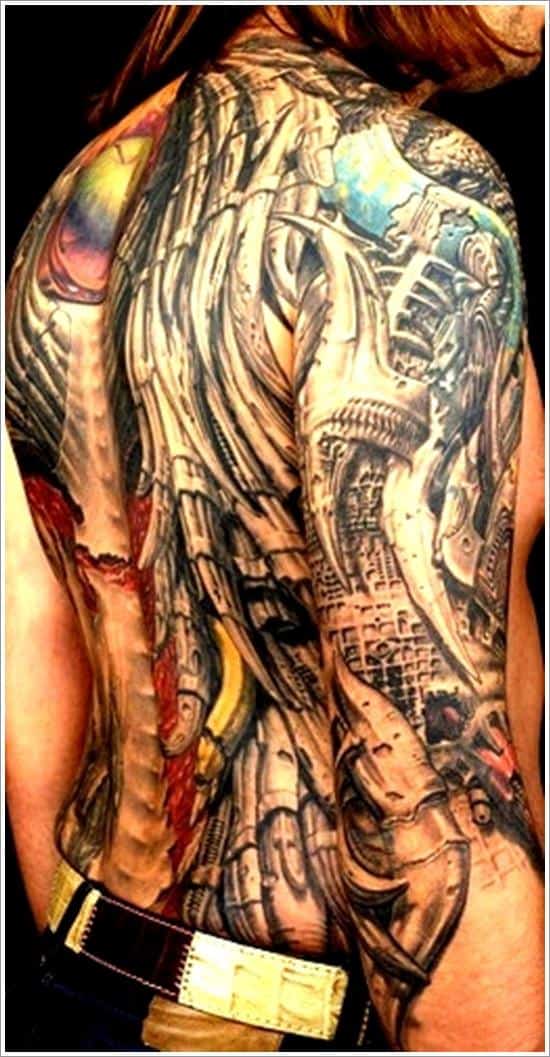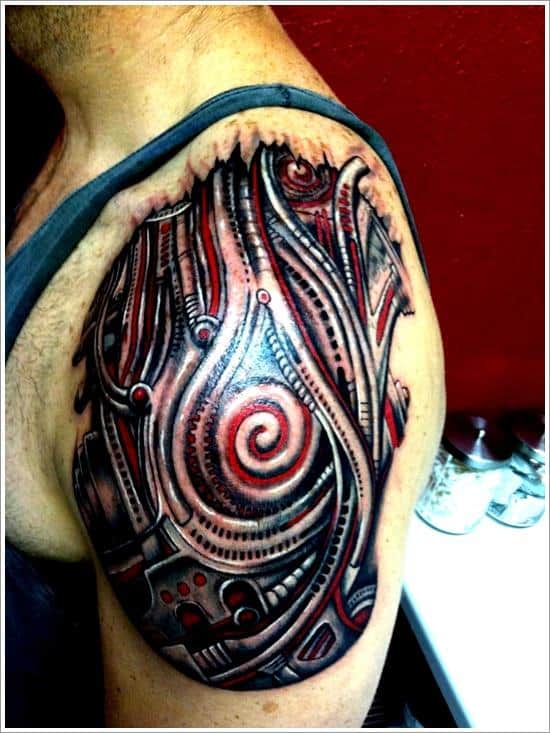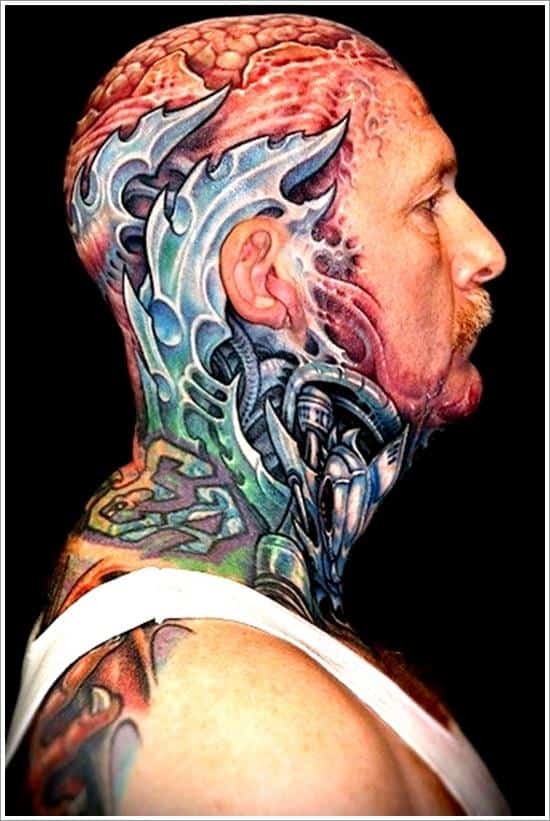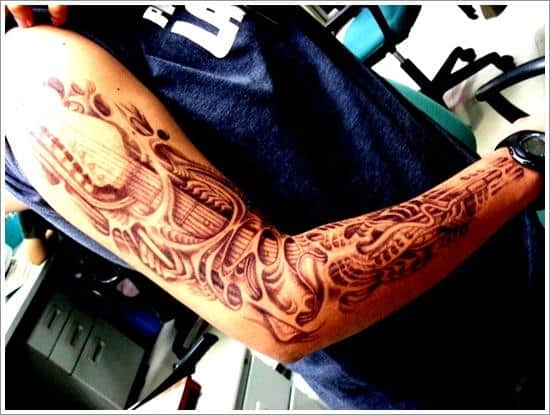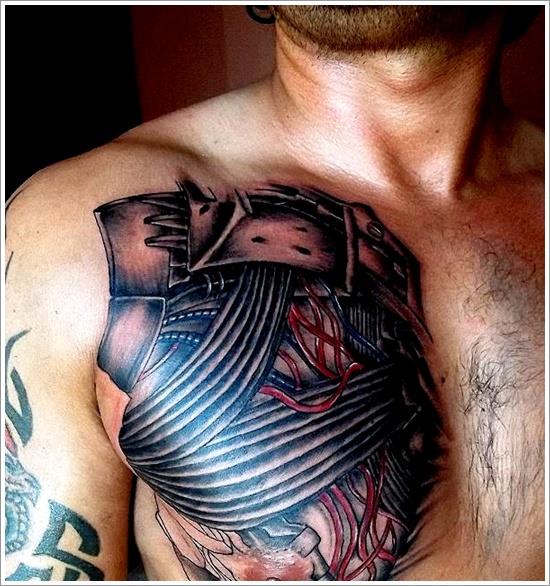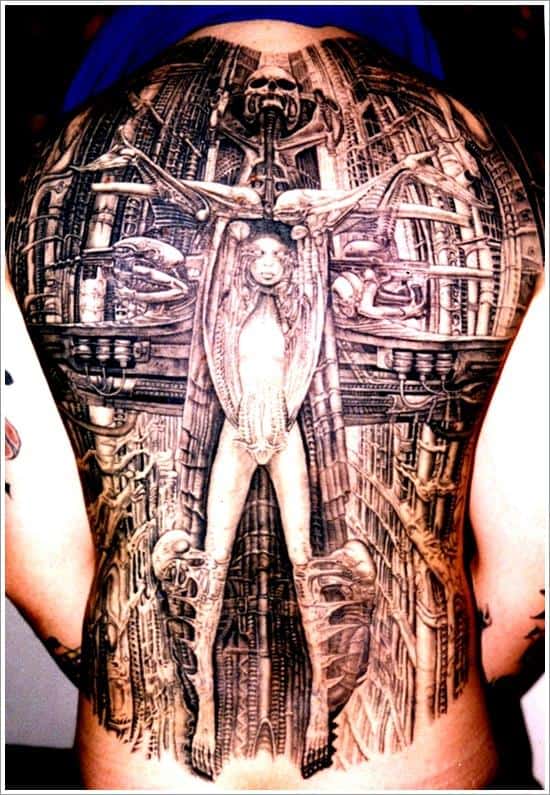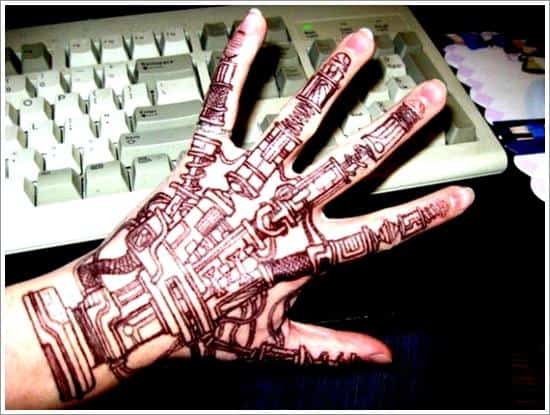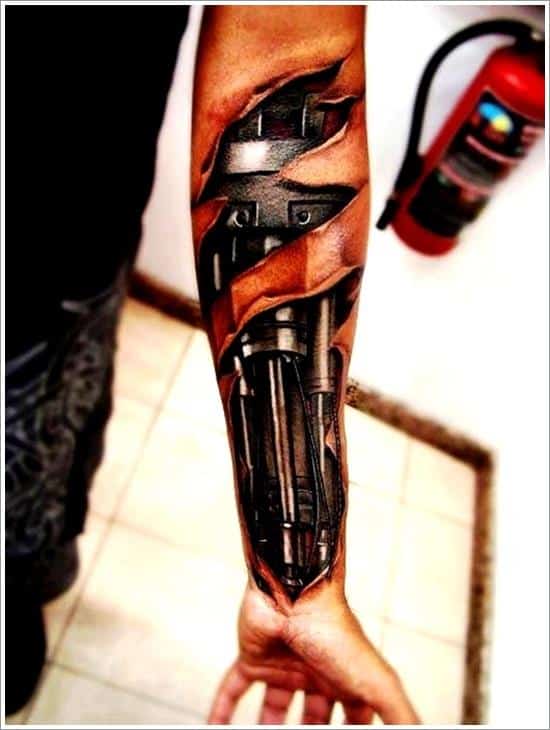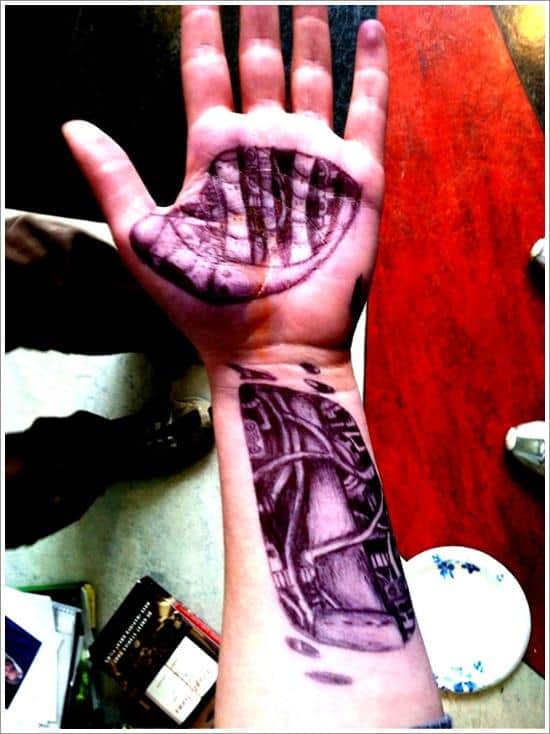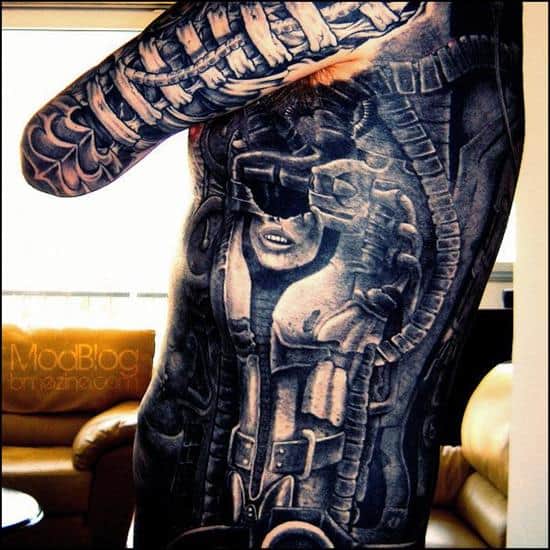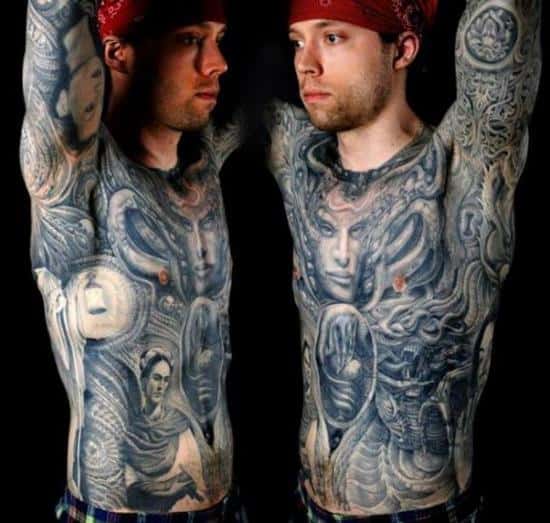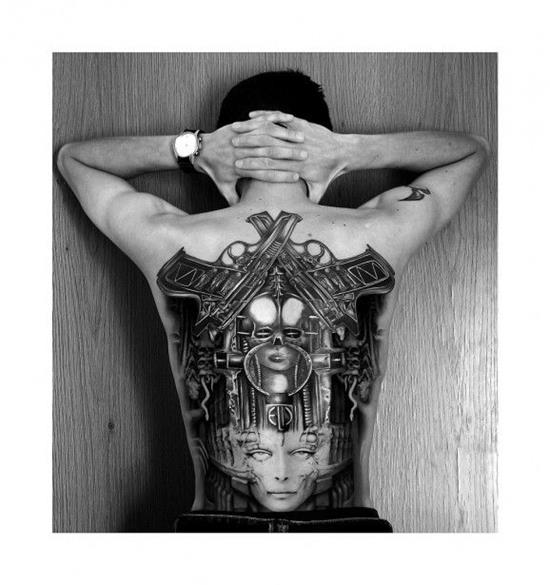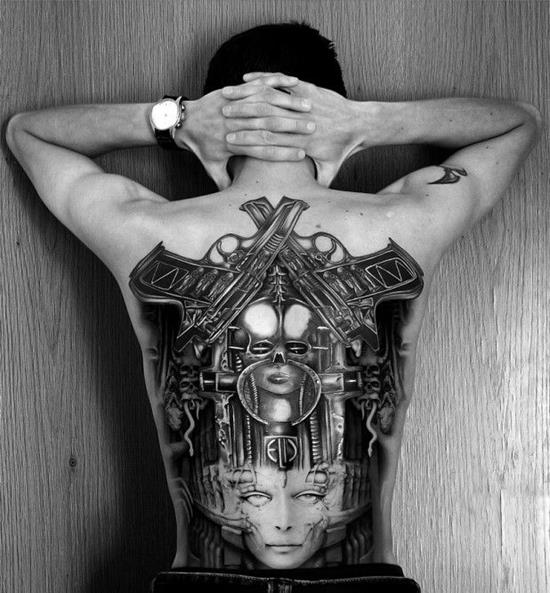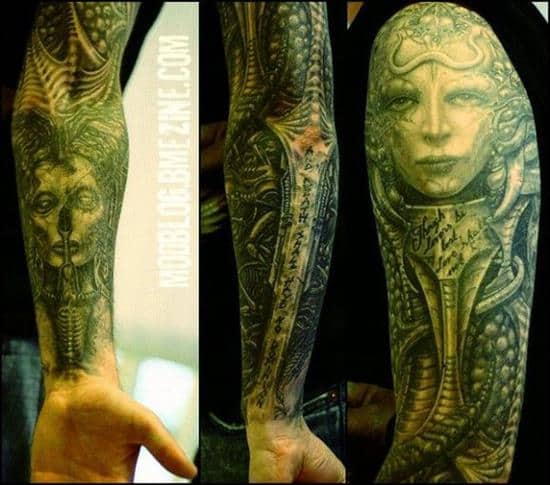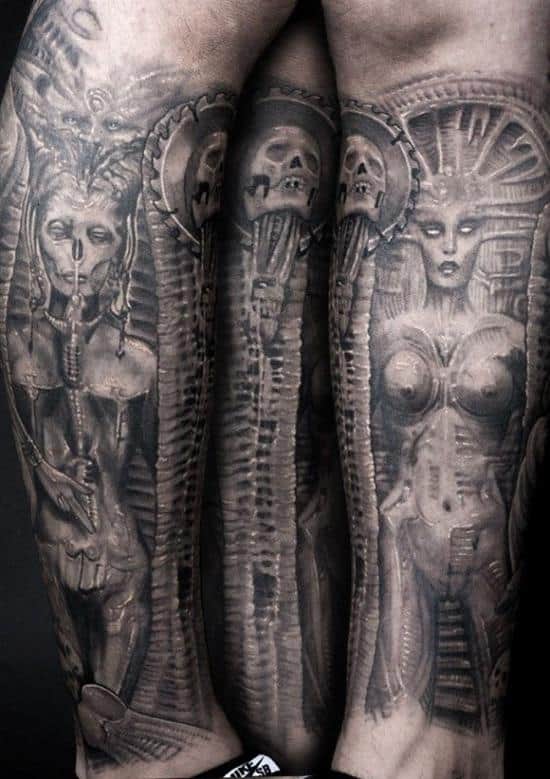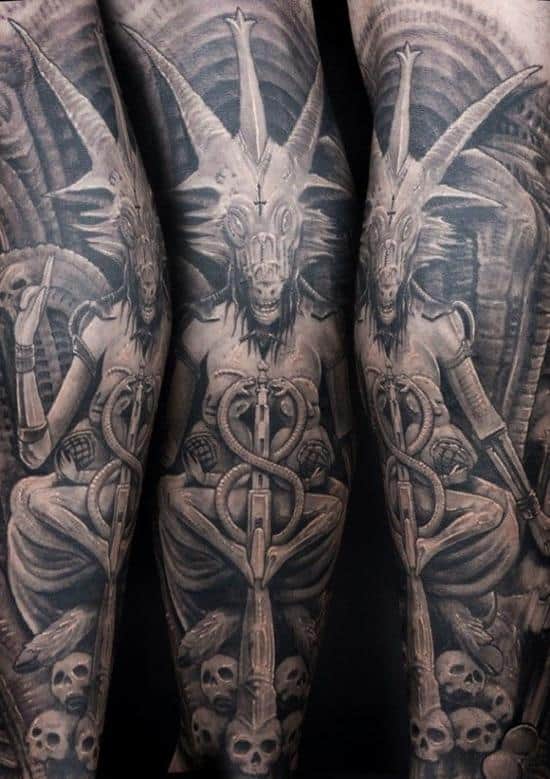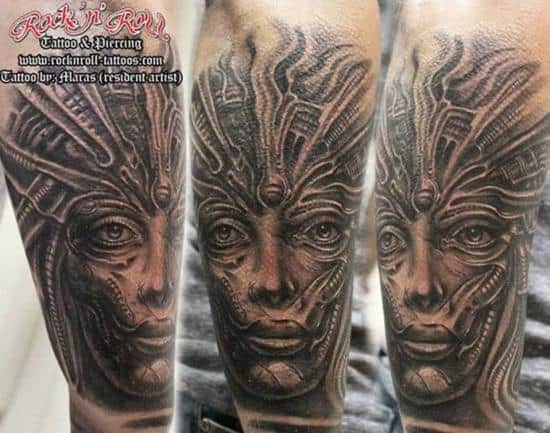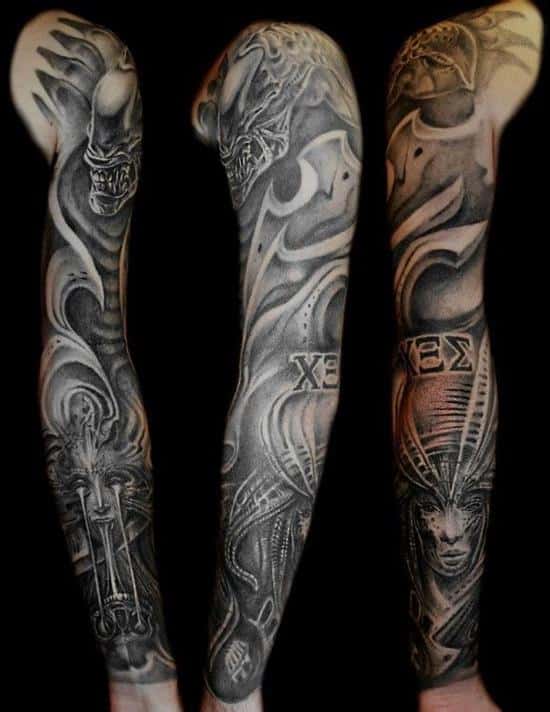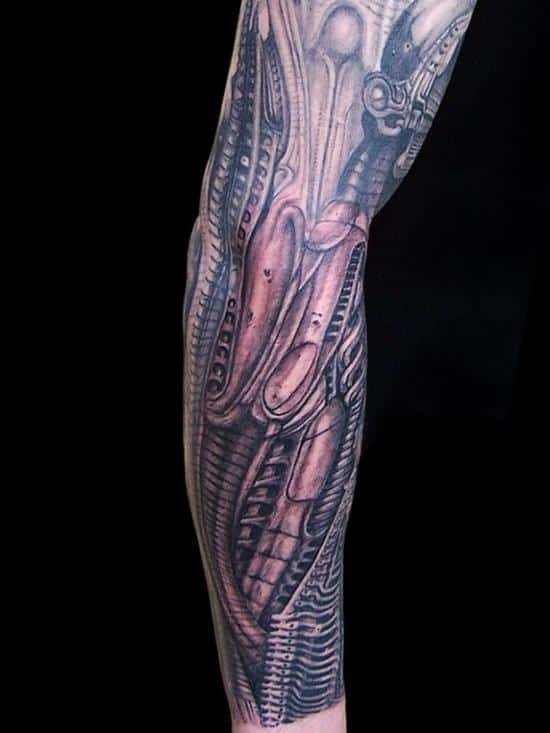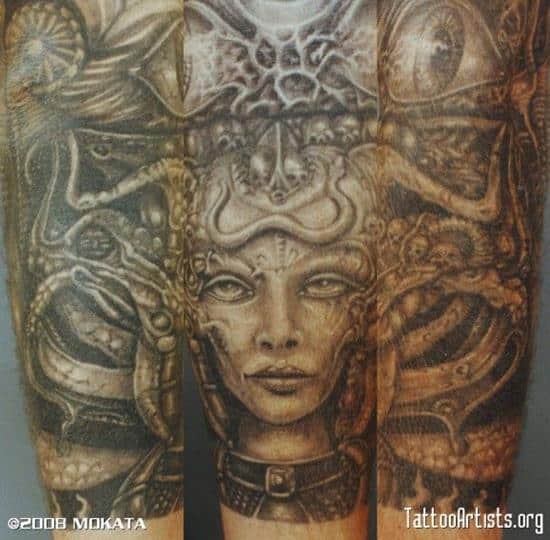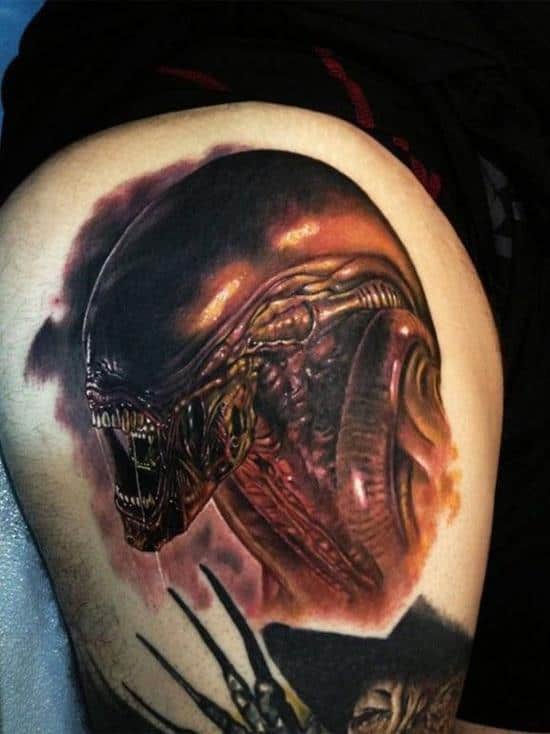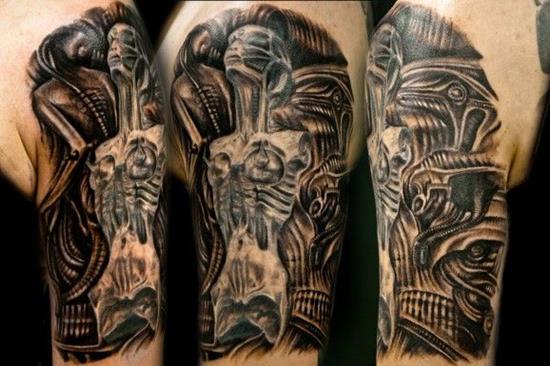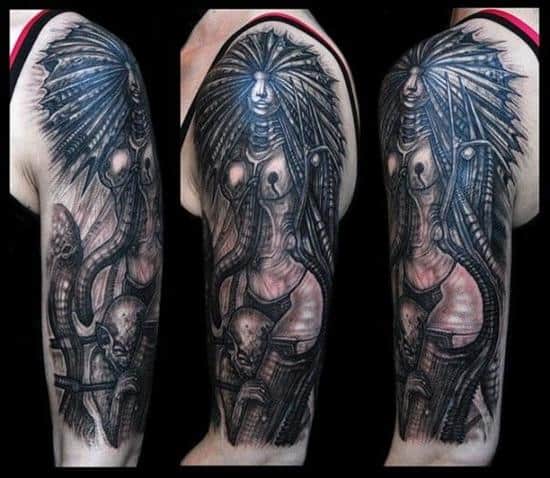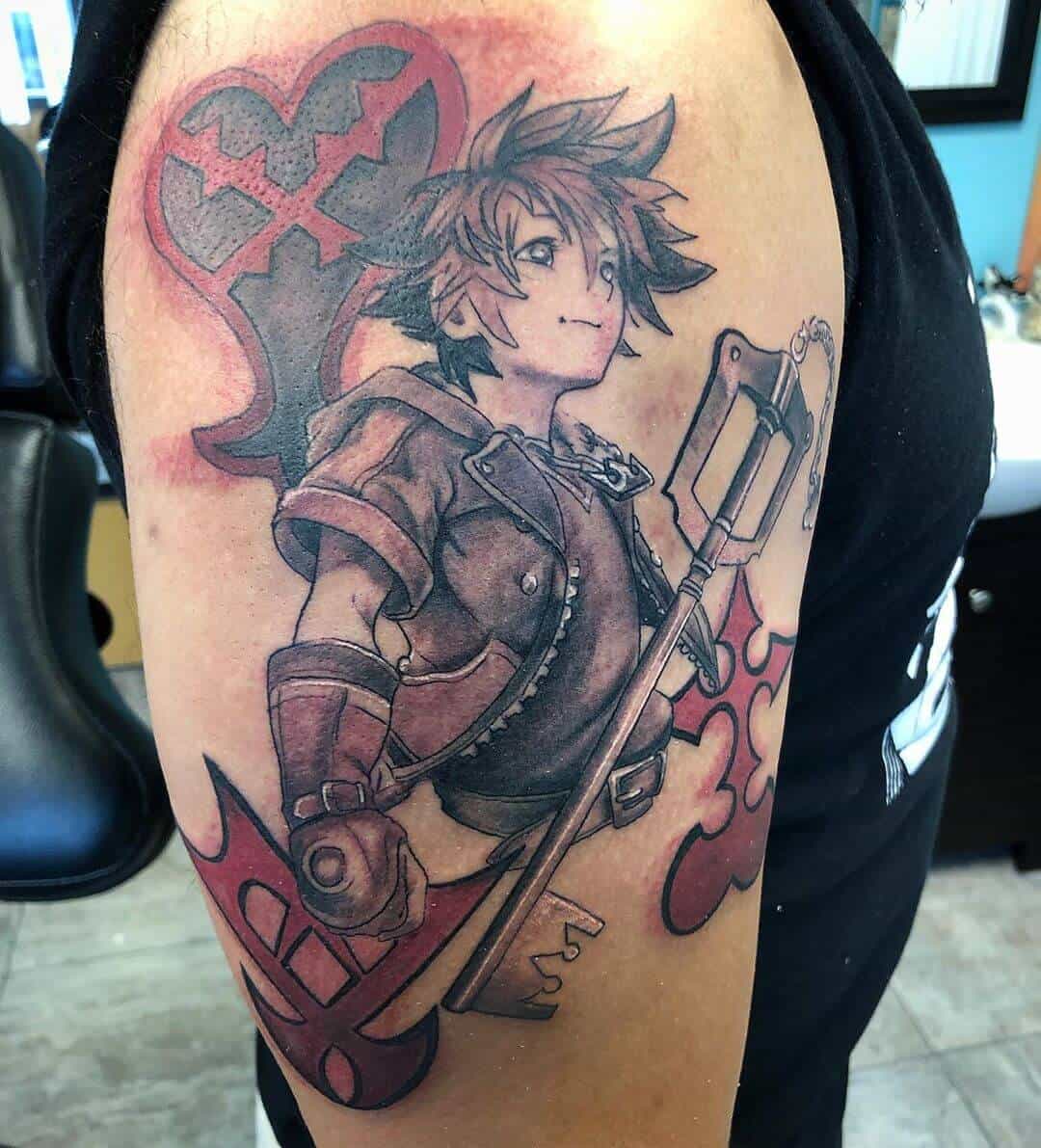Biomechanical tattoos are one of the most popular contemporary tattoo art movements.
As indicated by the name, they involve a combination of organic elements and mechanical pieces – a blending together of a living being and a machine.

Origins of biomechanical tattoos
Biomechanical art, also known as Biomech, originates from the 1970s and is closely tied to Ridley Scott’s 1979 film Alien.
The Swiss artist H.R. Giger is credited with being the originator of the biomechanical art movement.
Giger produced the artwork and conceptual designs for Alien, and the widespread success and popularity of the film sparked an interest in his style and imagery.
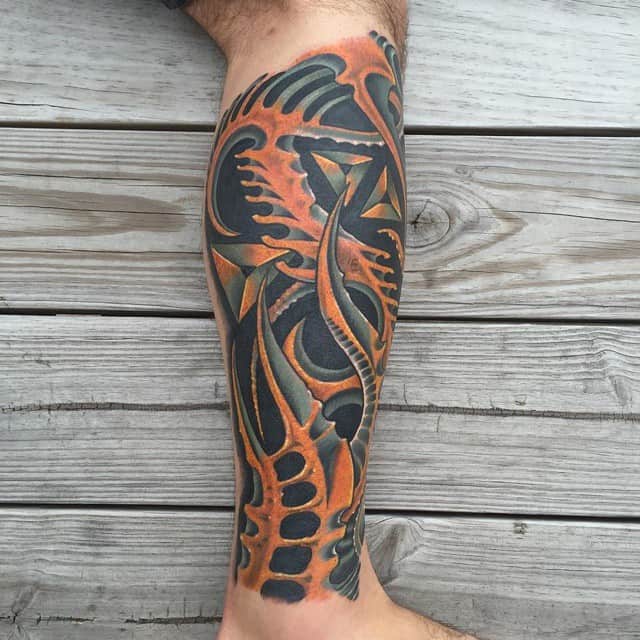
The first biomechanical tattoos were inspired directly by Alien and Giger’s other artwork, published in his Necronomicon series of books.
With increasing popularity of biomech, tattoo artists began designing their own art.
Though each biomech tattoo may be different, the feature they all share is the combination of organic and mechanical elements.
Commonly, this involves creating a tattoo that makes it look as if the person’s skin has been torn off, to reveal mechanical parts (rather than bones and muscle) beneath.
Biomech is a surrealistic style of art, which in short means that unexpected combinations of elements are rendered with high levels of precision and accuracy – as in hyper-realistic art – creating images that look realistic despite showing something unreal.
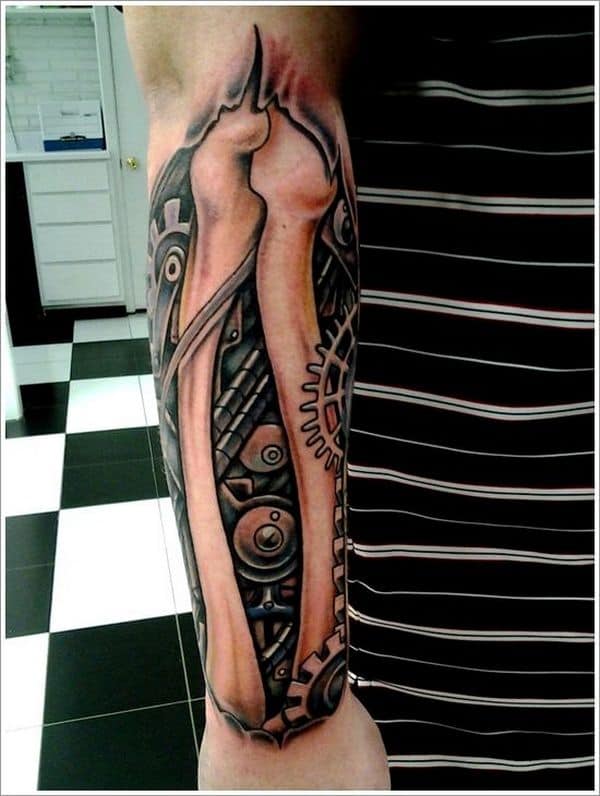
Biomechanical tattoo meaning
Biomechanical themed tattoos are associated with sci-fi and horror genres and tend to have a dark, dystopian, even slightly unsettling feel to them. They are a popular choice for fans of futuristic imagery.
The main reason why people opt for biomechanical tattoo designs is for aesthetic purposes and as means of appreciation of the Biomech art movement.
Most of the time, there is no particular hidden or symbolic meaning – these kinds of tattoos simply look awesome, and that’s all they’re meant to do.
Biomech only came into being relatively recently, so when compared with symbols that have been around since the earliest human civilizations, it’s unsurprising that it doesn’t carry that much symbolism.
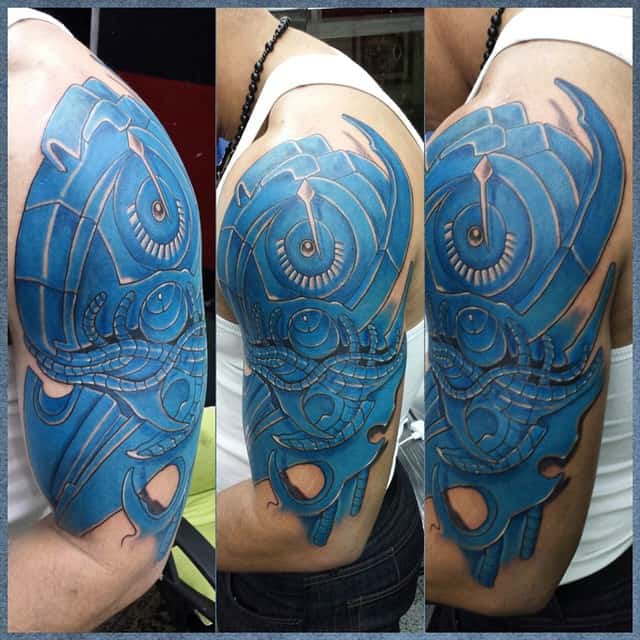
Things to keep in mind
When thinking about getting a biomech tattoo, there are a few things you may want to keep in mind.
Firstly, the vast majority of tattoos in this style are large – they have to be, to reach the desired visual effect.
A large tattoo means three things: one, it will be more expensive; two, it will be more painful; and three, it will be much more difficult (or downright impossible) to change or cover up with another tattoo in the future.
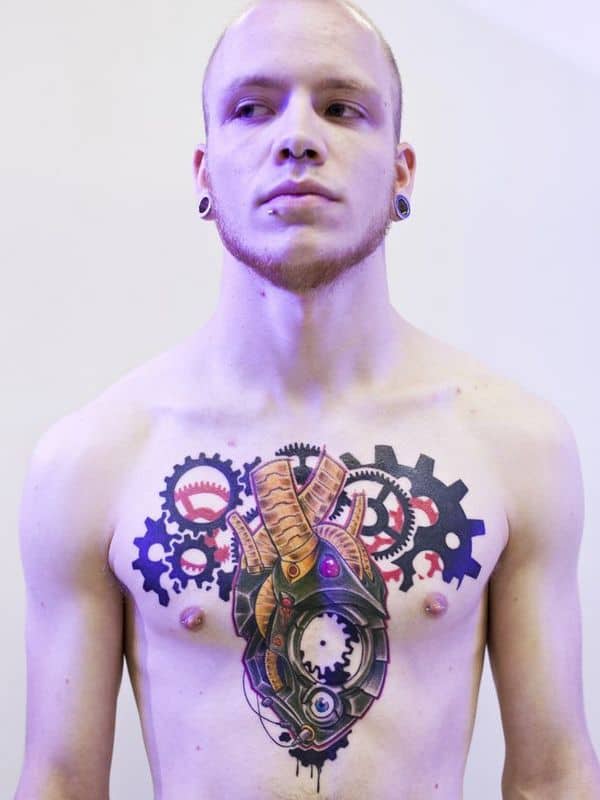
Another thing to consider is that not every tattoo artist will be able to adequately render a biomechanical design. Many of these make for a very difficult job for the tattooist, and choosing the wrong tattoo artist could end in disaster.
Ideally, look for an artist who has experience in this kind of work and whose past examples you’ve seen and liked.
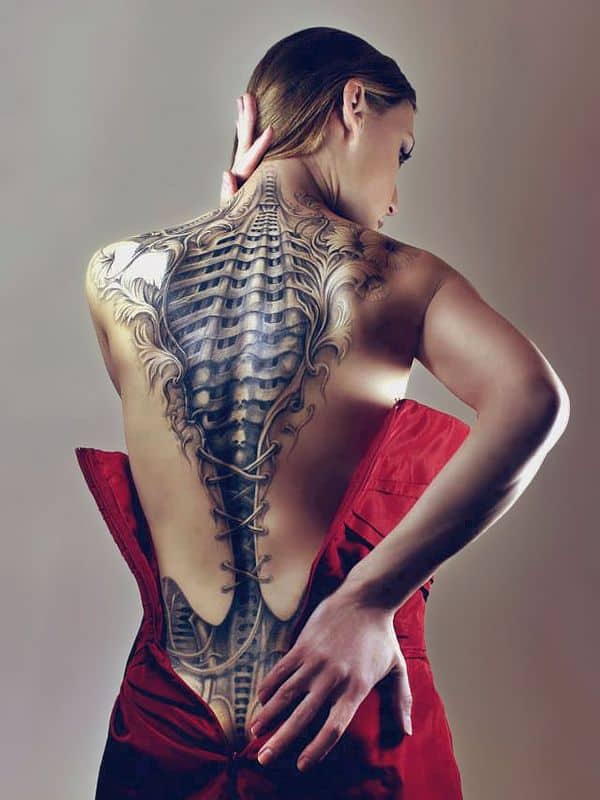
If you can’t find an artist with a specific biomech tattoo portfolio, look for someone who is at least experienced in 3D tattoo art – biomechanical designs almost always incorporate a hyper-realistic, 3D look, and this is the hardest thing to get right when tattooing this style.
3D tattoo artists should have the abilities and expertise to produce a great-looking biomechanical design.
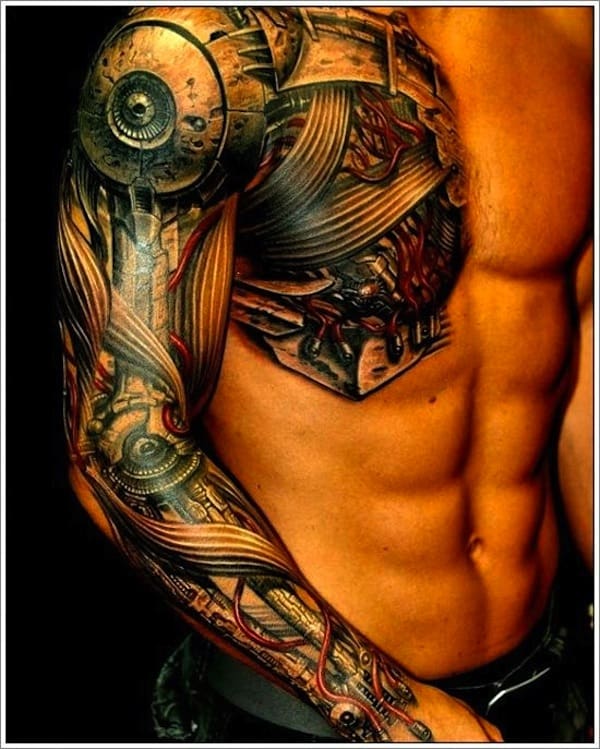
Popular design options
Biomechanical art is a highly distinctive style, involving some key common elements. Mechanical parts such as chips, pipes, rods, pistons, rods, gears, and levers are important in making the design instantly recognizable as part of the movement.
While the details will vary hugely between different art pieces, the one characteristic that defines biomech is the combination of organics and mechanics.
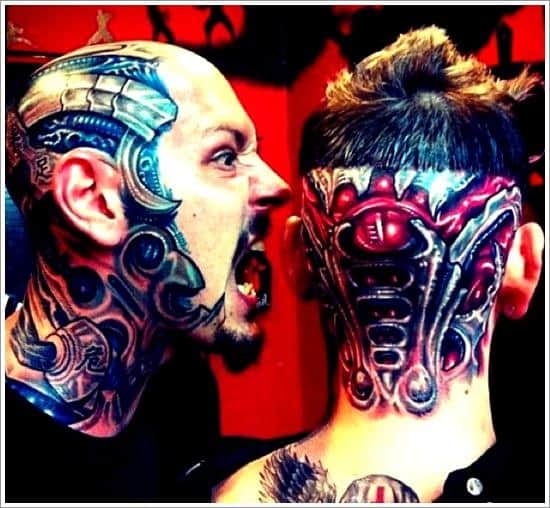
For a tattoo to be considered a biomechanical design, it needs to show the melding together of a living being and a machine.
As mentioned above, this is usually done through the visual effect of ‘ripping’ of the skin to reveal machine parts underneath – often mechanical pistons instead of bones, combined with realistic-looking organic muscle and sinew.
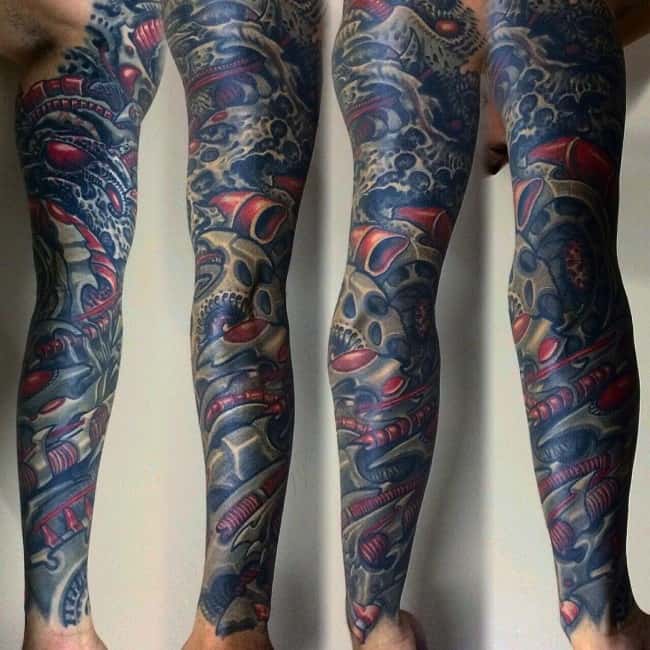
Another common way of combining organics and mechanics in a tattoo is a standalone image, for instance of a heart or of an animal, modified to include mechanical parts.
Biomechanical tattoos can also take the form of images of mechanical devices, tattooed to look as if they’re attached to the body.
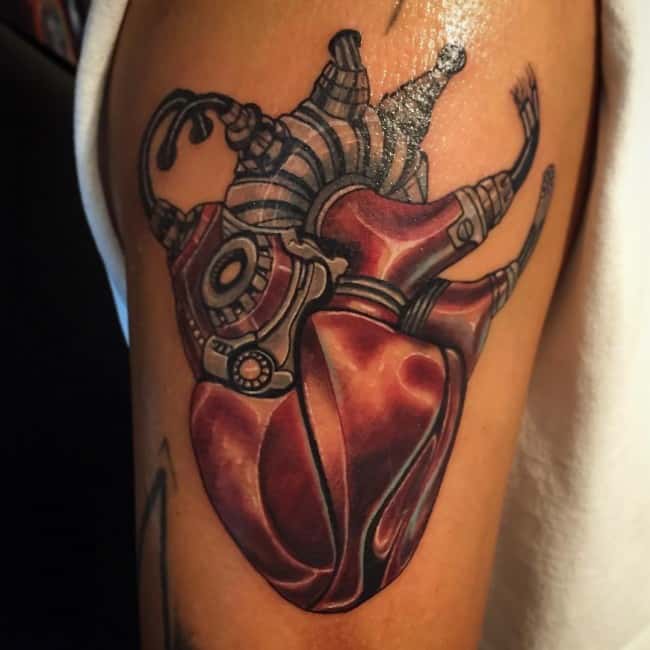
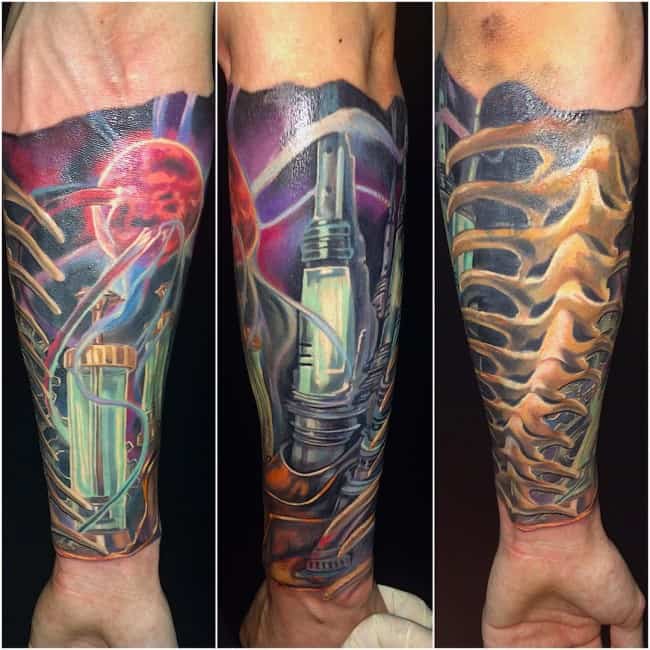
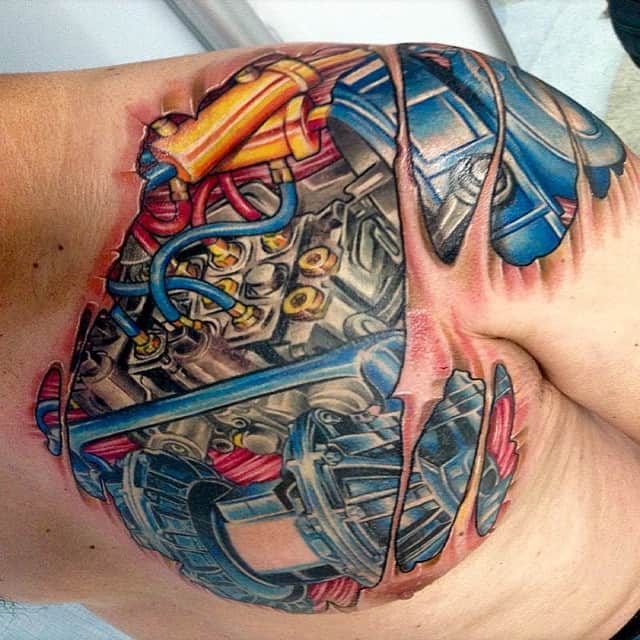
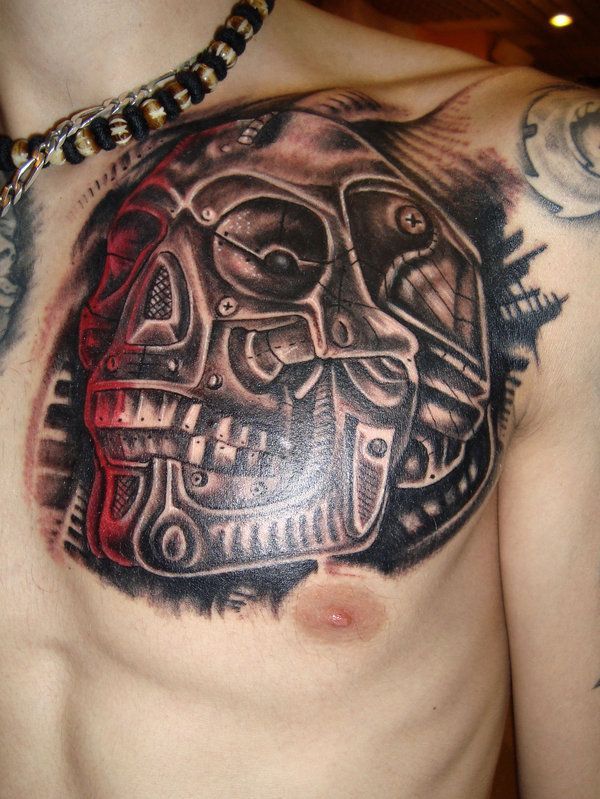
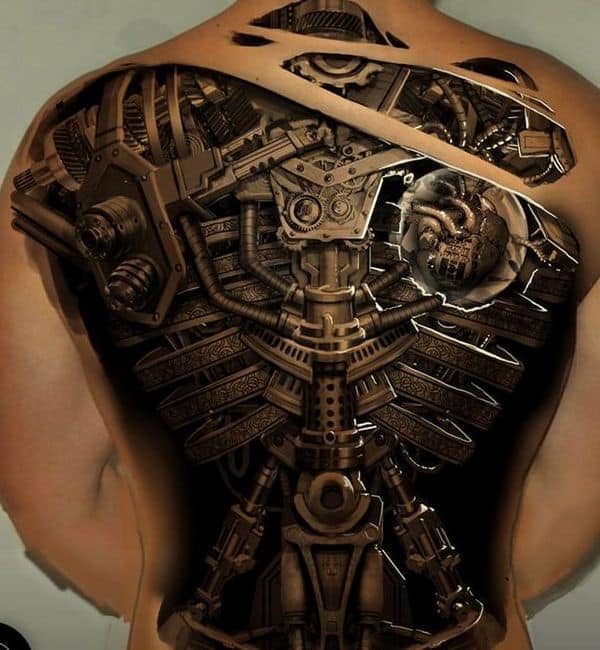

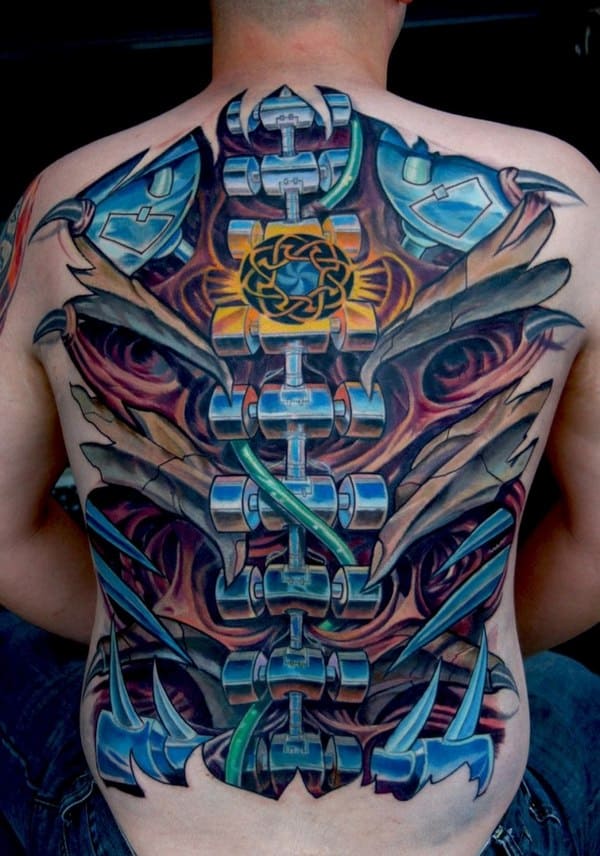

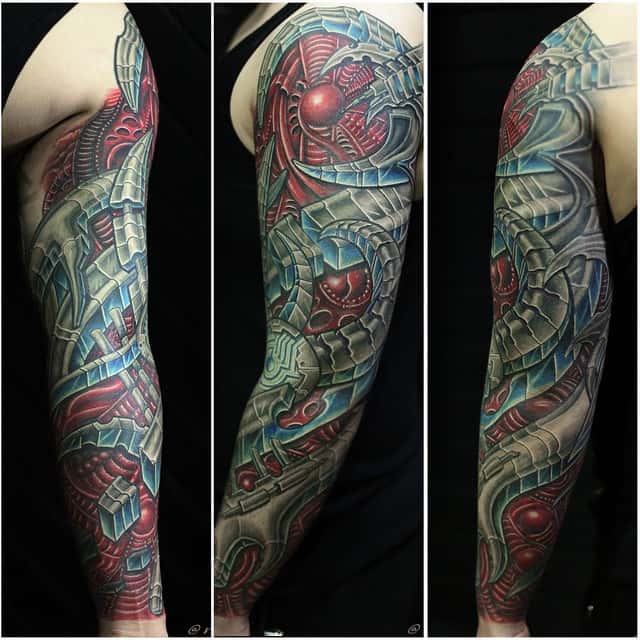
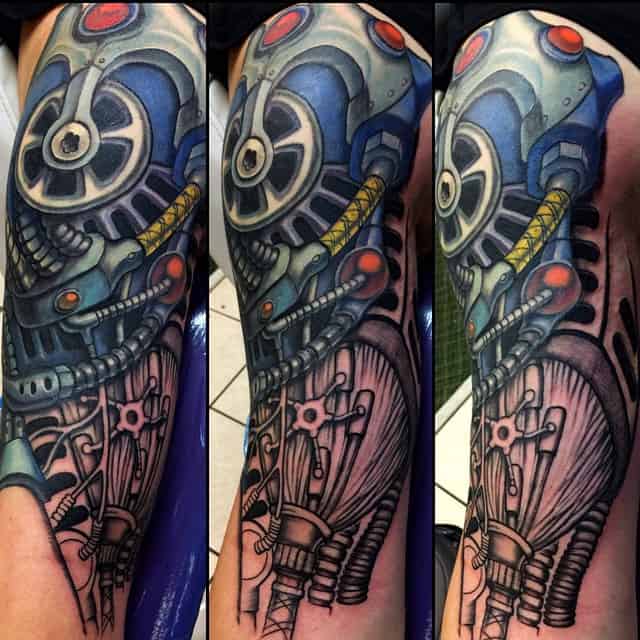
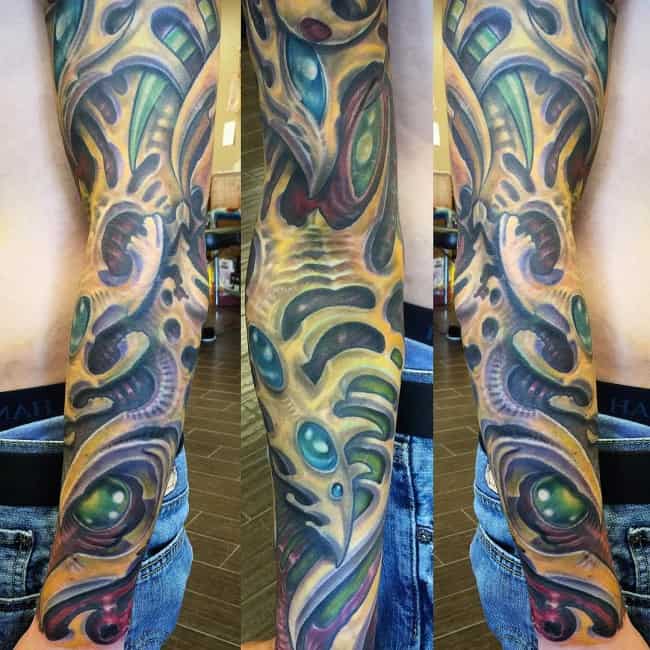
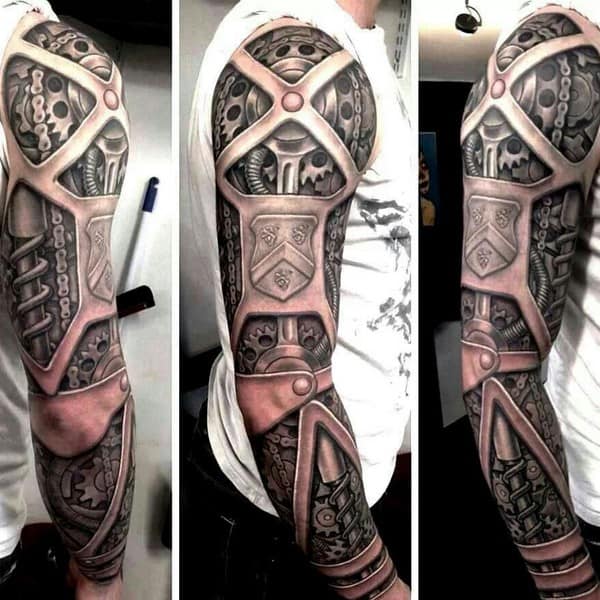
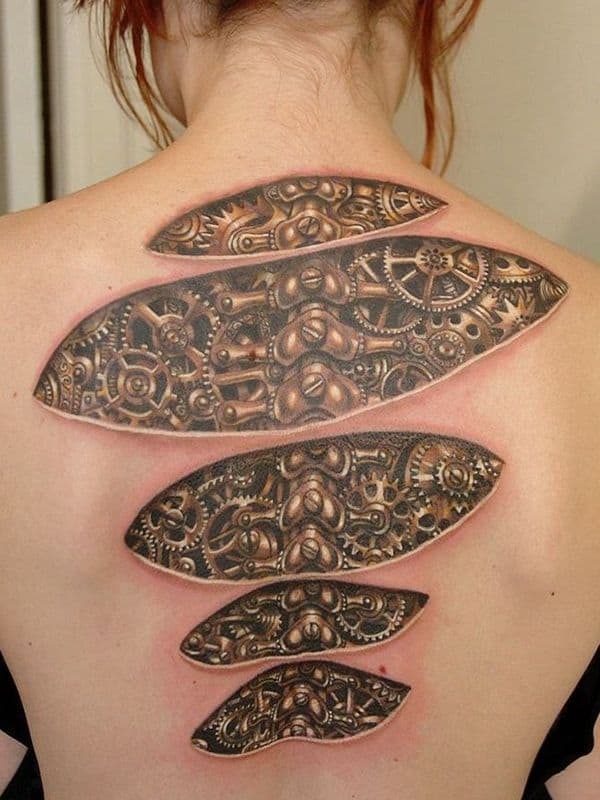
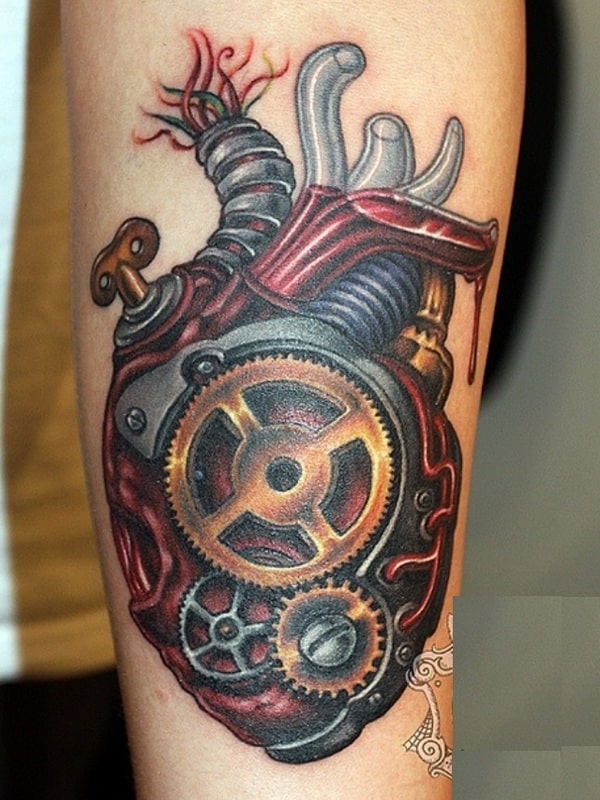

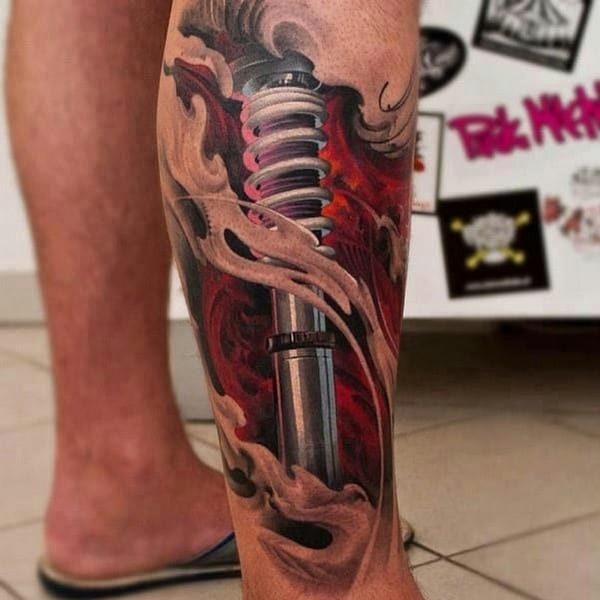

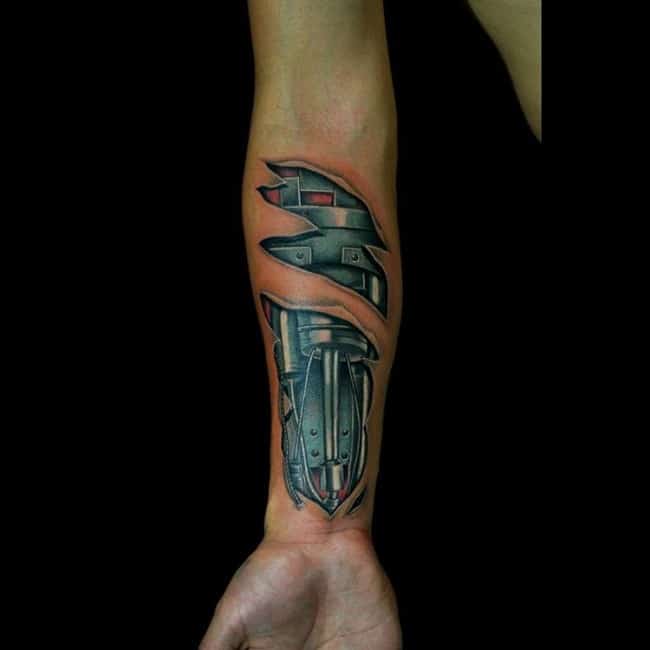
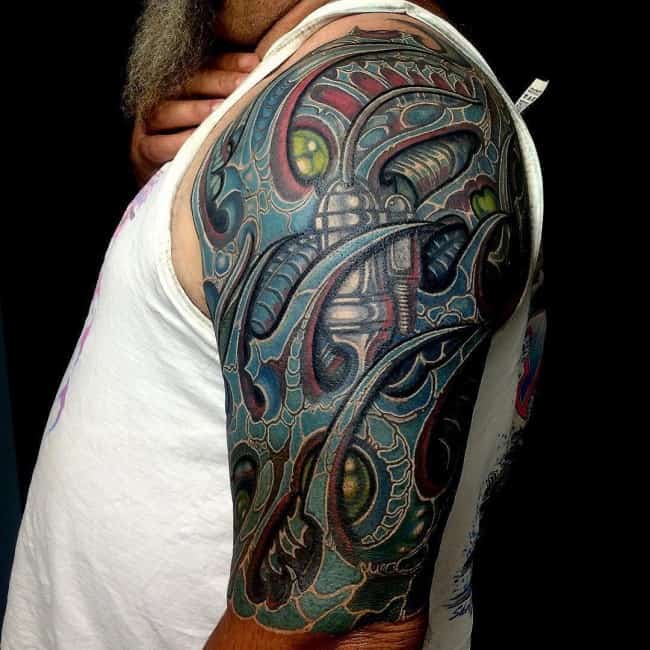
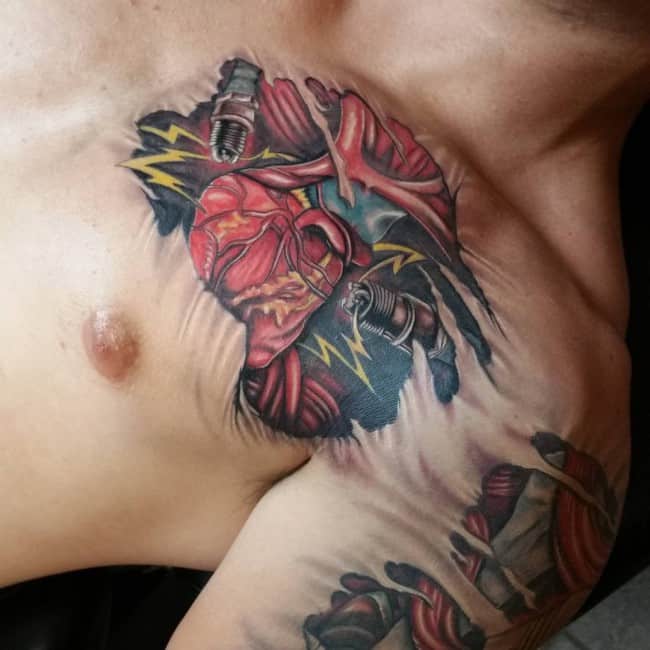
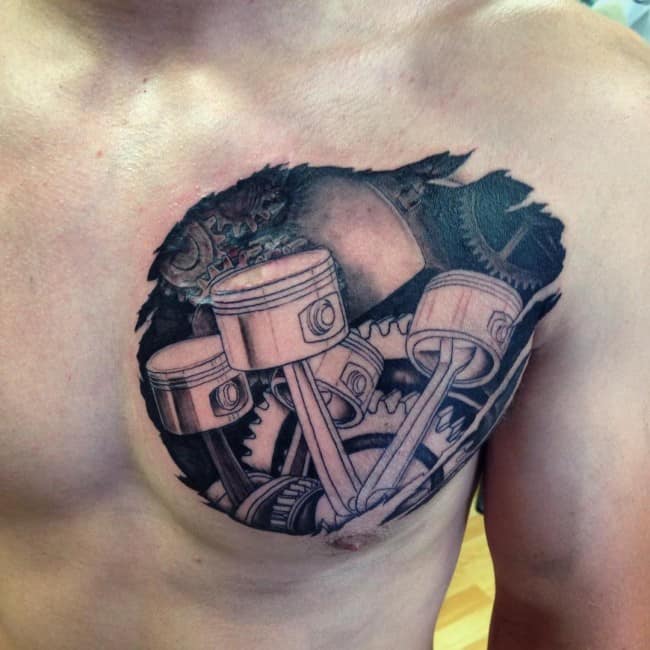
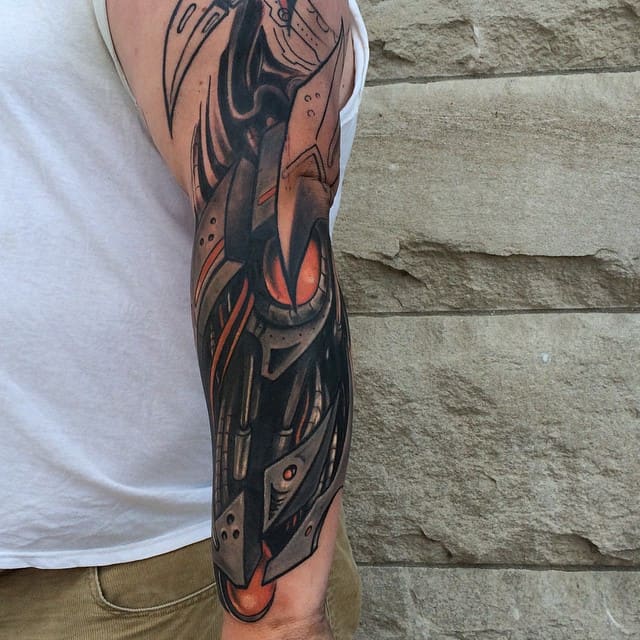
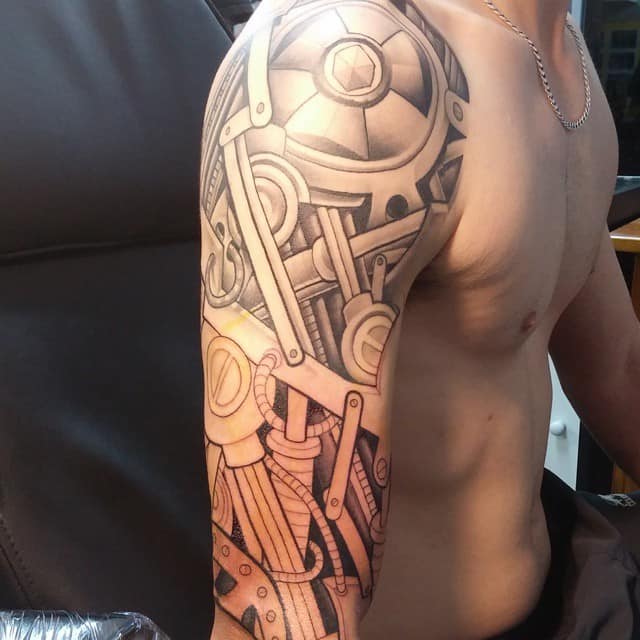
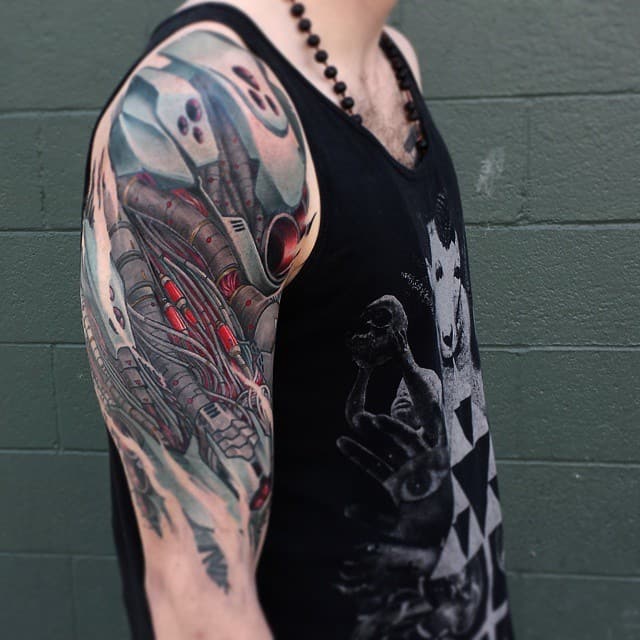
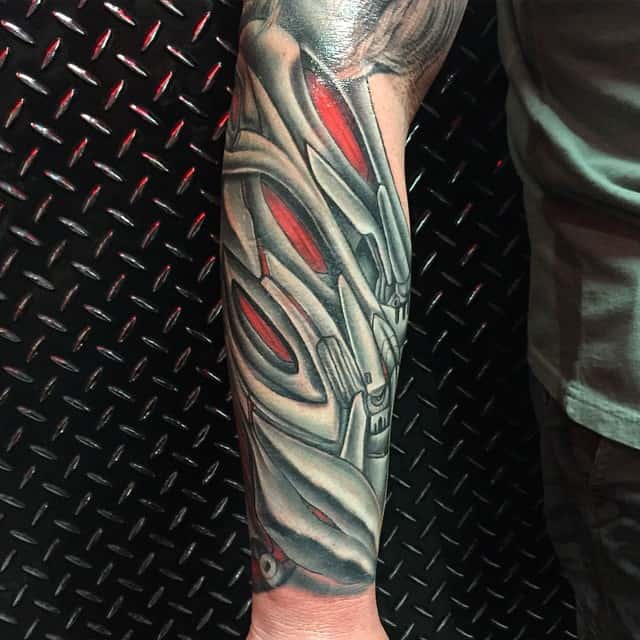
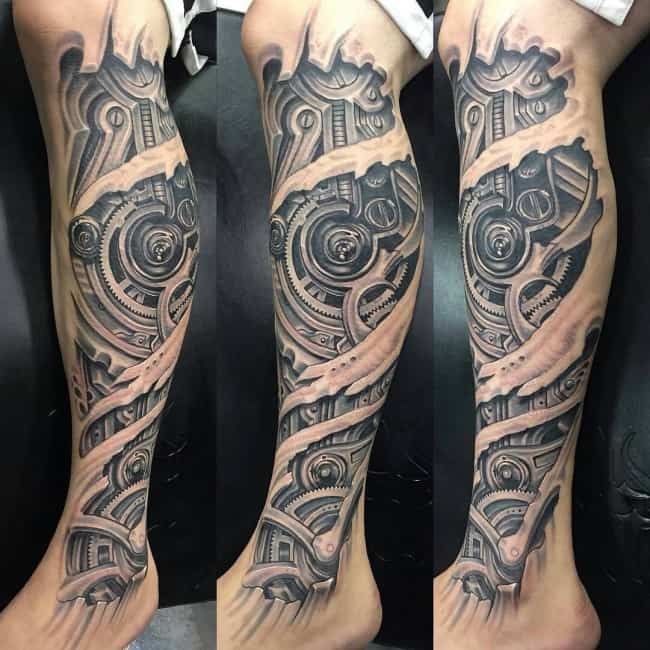
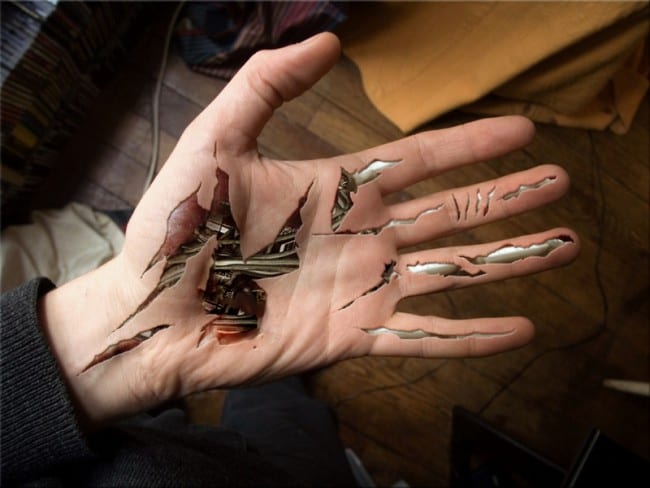
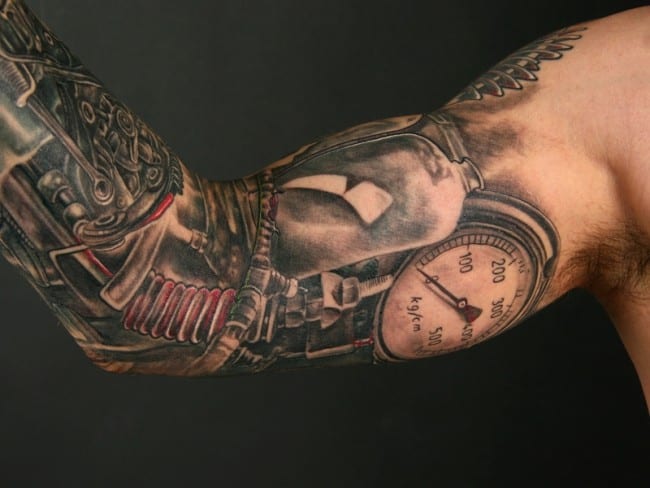
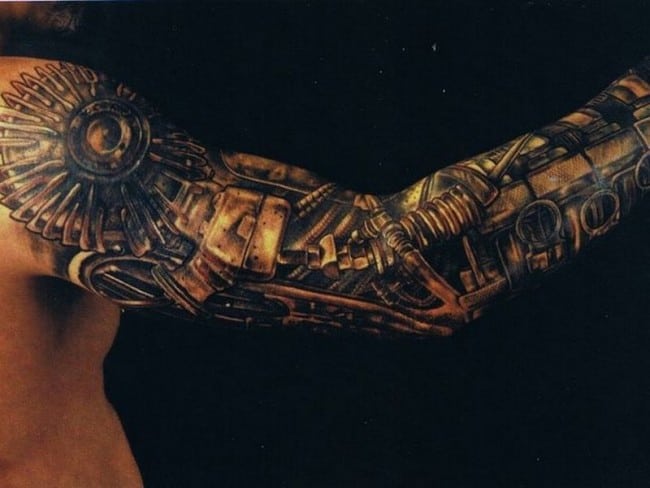
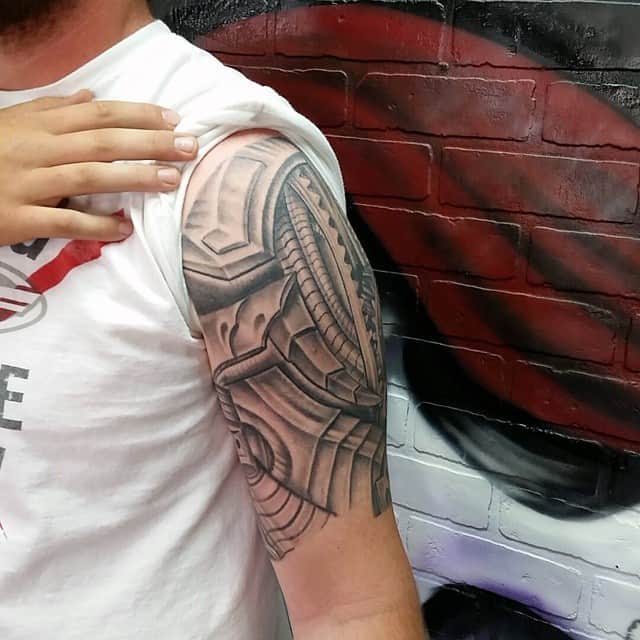
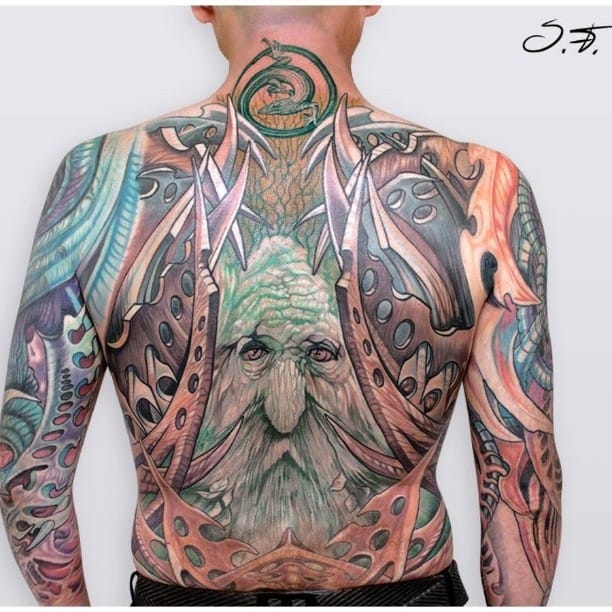
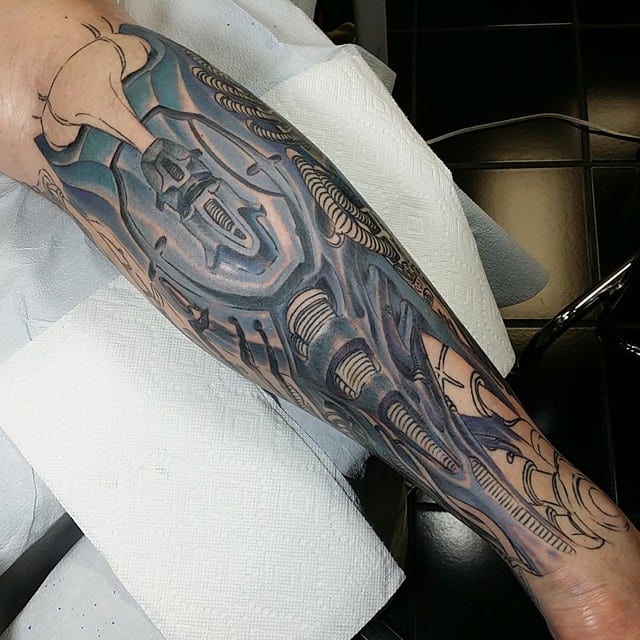
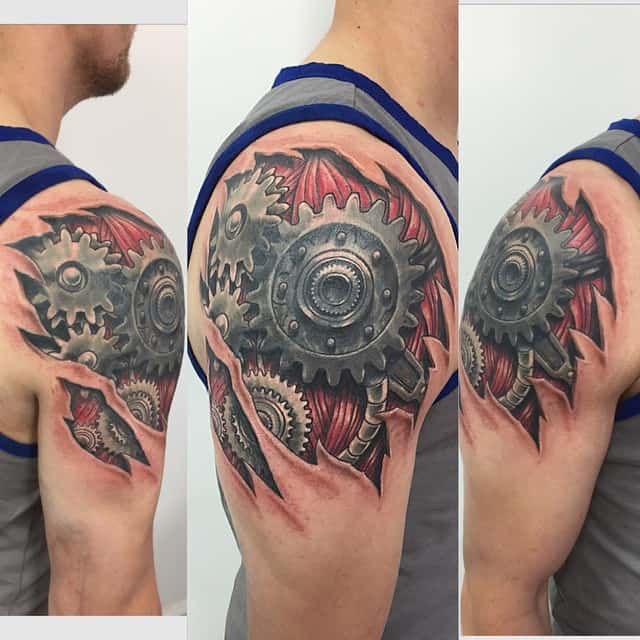
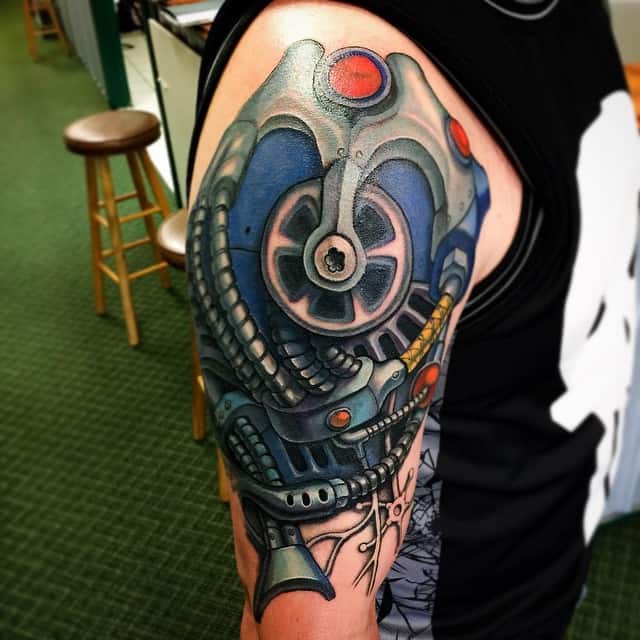
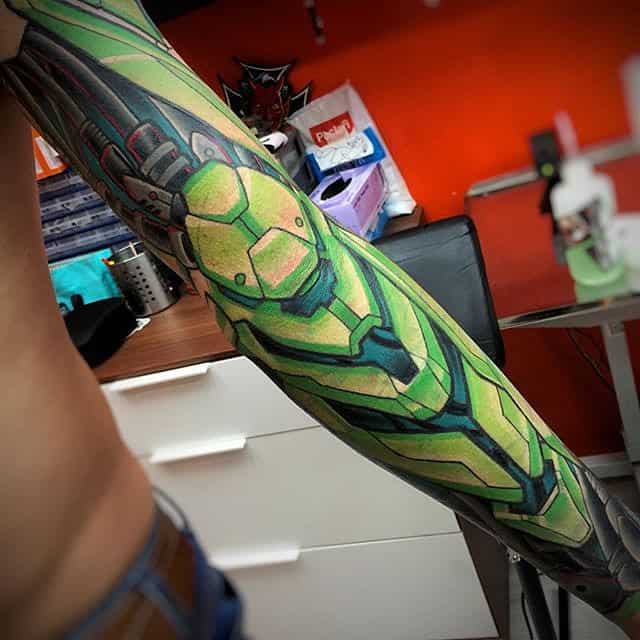

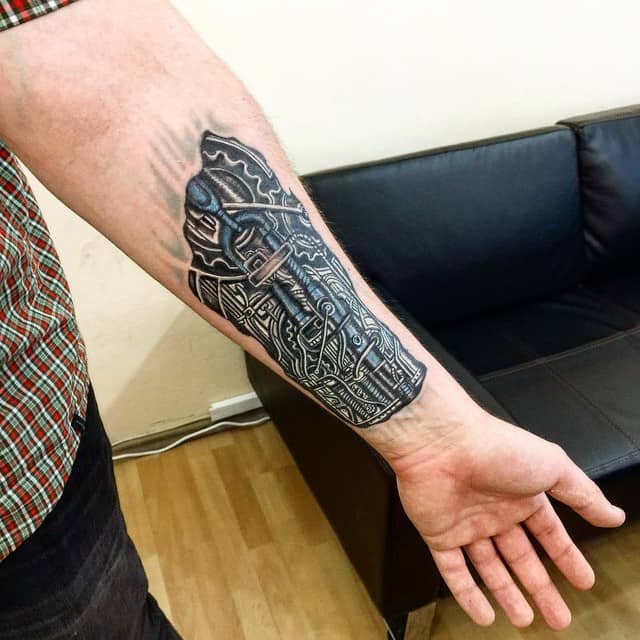
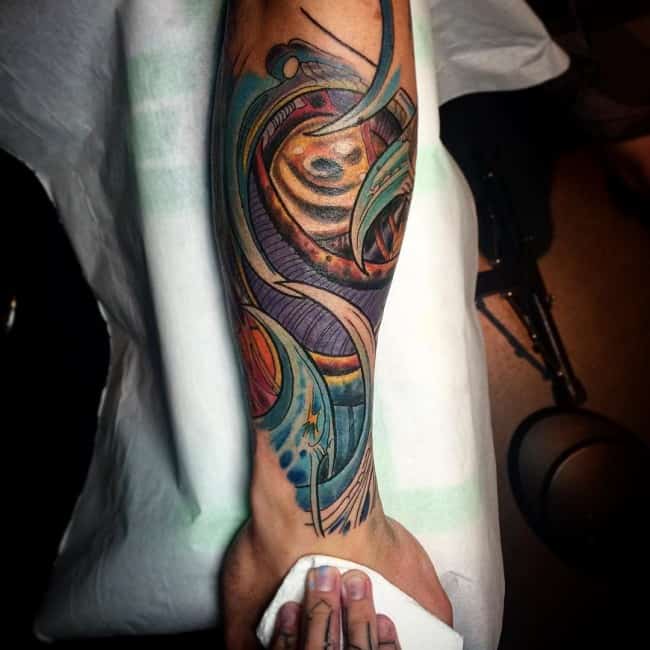
Placement Guide
As we’ve seen by now, biomechanical tattoos will tend to be at least medium-sized. Of course, it’s not impossible to have a small Biomech-inspired tattoo, but the style tends to involve large designs. As such, they are best suited for the following placements:
- Back – The back is the largest flat area on the body, and as such, it’s perfect for a big, complex tattoo. Biomechanical tattoos done on the back usually involve a ‘skinless’ look – appearing to expose the spine, ribs, and internal organs, either entirely mechanical or combining a realistic organic look with mechanical elements.
- Legs and arms– Legs are also perfect locations for a biomechanical tattoo. Piston-like ‘bones’ combined with realistic-looking muscle are often tattooed on legs and arms to create the illusion of being part-machine. These can either wrap all the way around the leg or arm, or take the ‘ripped-off skin’ route. On arms, they are usually sleeves. Keep in mind that tattoos on arms are particularly bothersome to cover up if you need to keep them hidden, for example at work.
- Chest and Stomach – …or both. The chest and stomach area offers a large space for complex tattoos. Biomechanical designs on the chest often involve an image of the heart, either mechanical or part-mechanical.
- Hand and Palm – One of the most common placements for smaller biomechanical designs. They look awesome and can be added to in the future, extending the tattoo up the forearm. Tattoos on hands are some of the most difficult to hide though. If that’s your placement of choosing, be warned: it’s going to hurt. A lot.
Final Words
Though lacking in definitive symbolic meaning, biomechanical tattoos are a great choice purely for their aesthetic value. Done well, they’re nothing short of art pieces, and let’s face it: they look insanely cool. And limited symbolism is not necessarily a bad thing: your Biomech tattoo can mean anything you want it to mean, without pre-defined ideas and immediate associations. Plus, with the help of a talented artist, it’s going to be totally unique to you.
